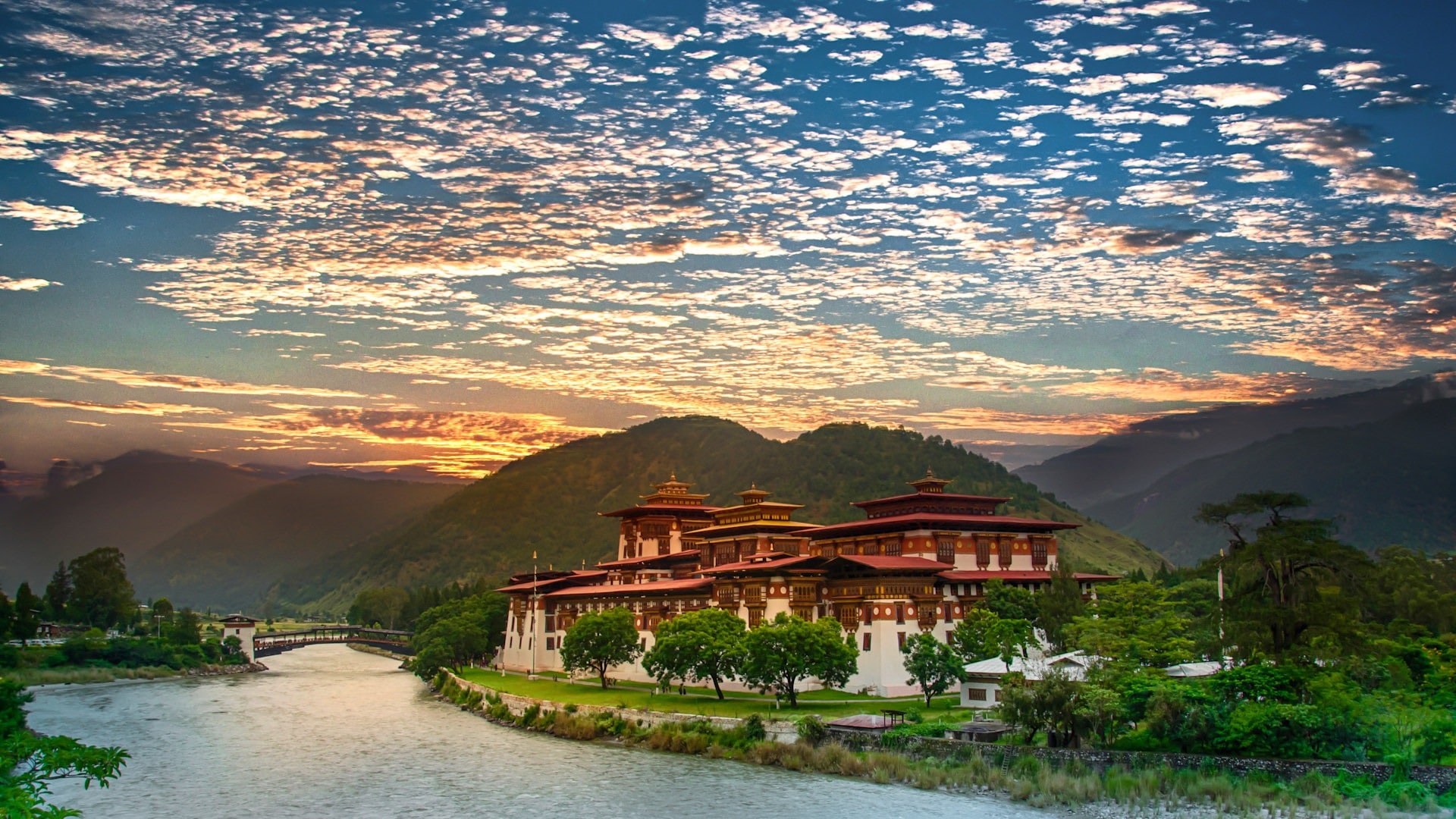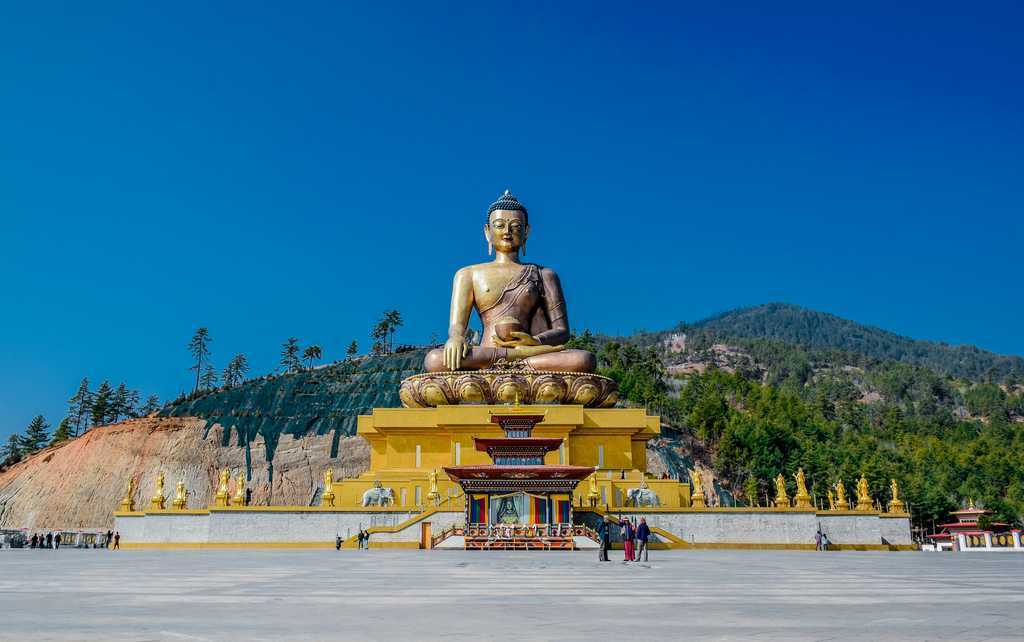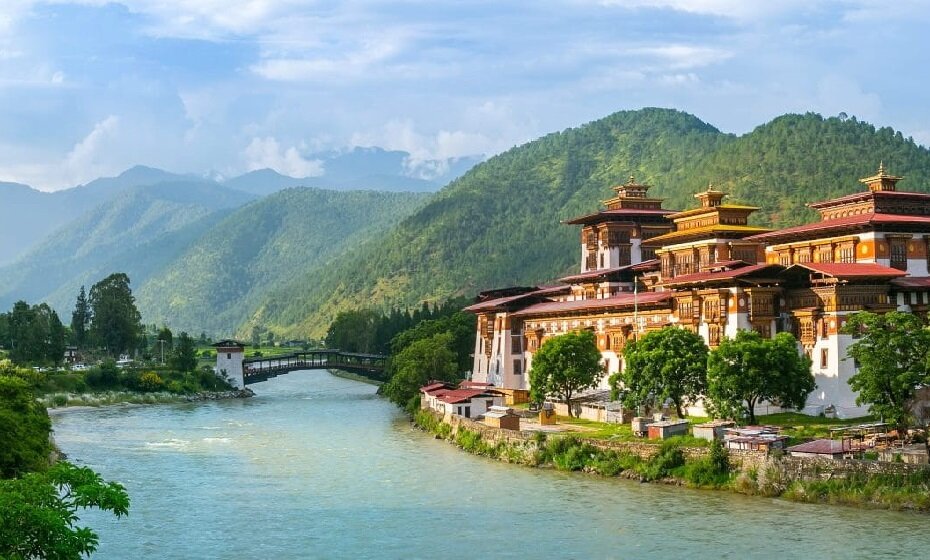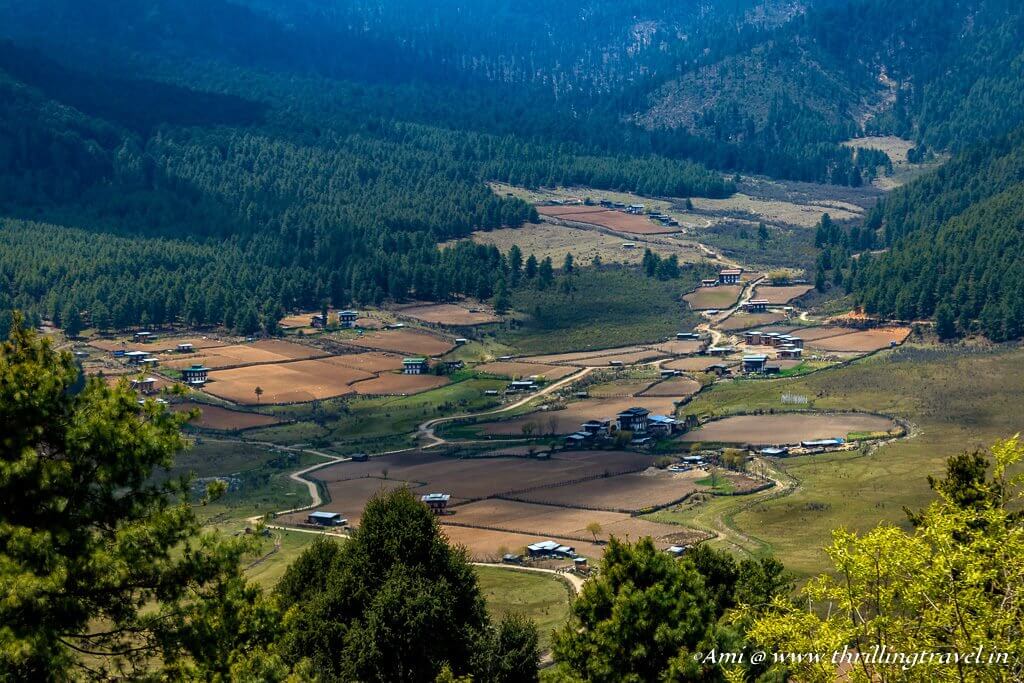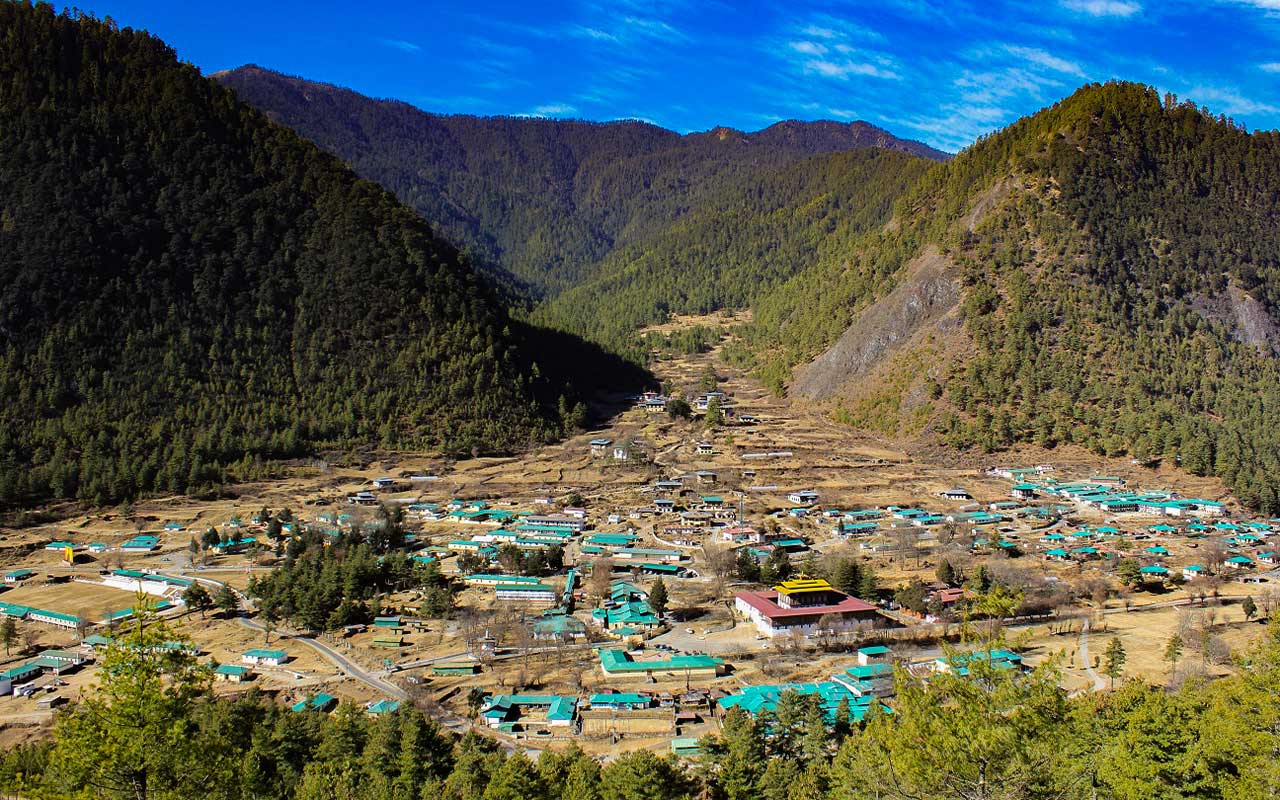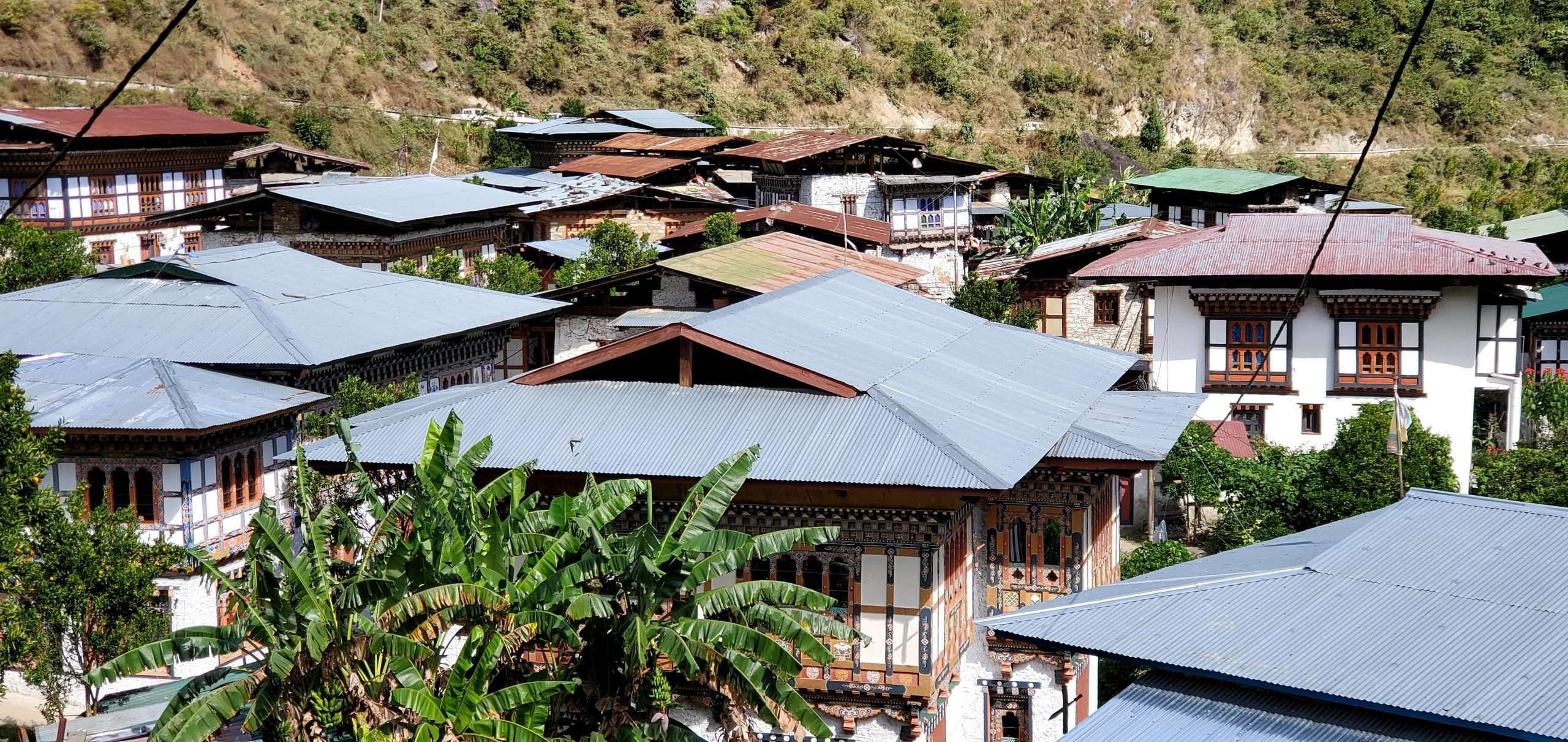Bhutan Sightseeing Places
Bhutan is a stunning country known for its natural beauty, rich culture, and deep sense of spirituality. There are plenty of sightseeing places that are worth visiting. Here are some of the top destinations in Bhutan: ...
Bhutan’s charm lies in its combination of natural beauty, spirituality, and preservation of its culture. When visiting, remember that Bhutan places a strong emphasis on sustainable tourism, so respecting the culture and environment is essential.
Quick Navigation
1. Tigers Nest Monastery Paro Taktsang
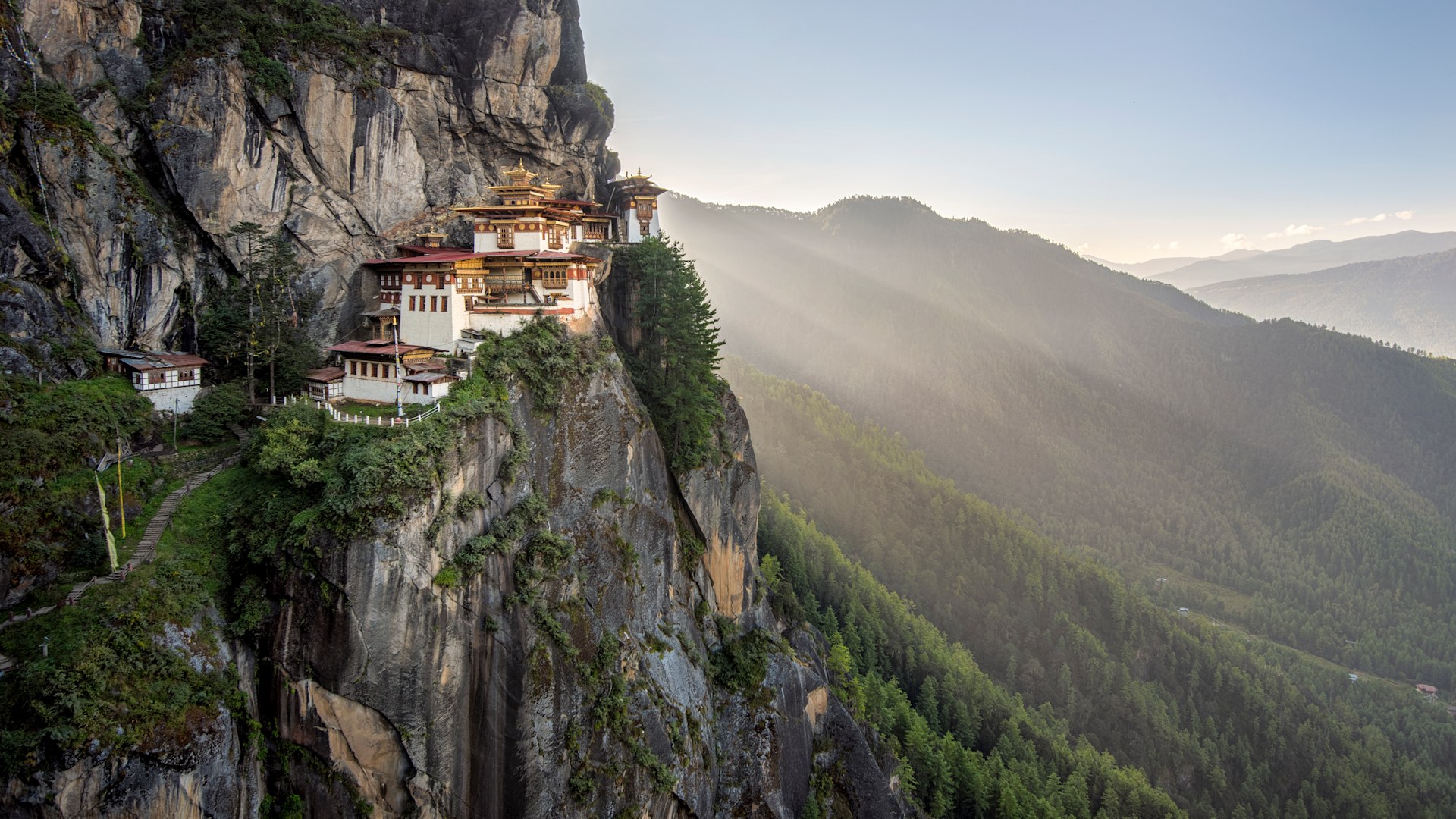 ( Tigers Nest Monastery Paro Taktsang is the most visited sightseeing place in bhutan and mostly tourists must visit here )
( Tigers Nest Monastery Paro Taktsang is the most visited sightseeing place in bhutan and mostly tourists must visit here )
Paro Taktsang (Tiger’s Nest Monastery)
Paro Taktsang, also known as Tiger’s Nest Monastery, is one of the most iconic landmarks in Bhutan and an absolute must-see for visitors. Situated at an altitude of 3,120 meters (10,240 feet) on a cliffside in the Paro Valley, the monastery offers stunning views and a deeply spiritual atmosphere. The monastery is believed to have been built in 1692, but the site’s significance dates back to the 8th century, when Guru Rinpoche, a revered spiritual figure in Bhutan, meditated here after flying on the back of a tiger.
This legendary association with the tiger adds a mystical allure to the place. The monastery is composed of four temples and various caves, with the main temple housing sacred relics and murals depicting Guru Rinpoche's life. Reaching the monastery requires a hike, which takes about 3 to 4 hours, depending on one's pace.
2. Rinpung Dzong
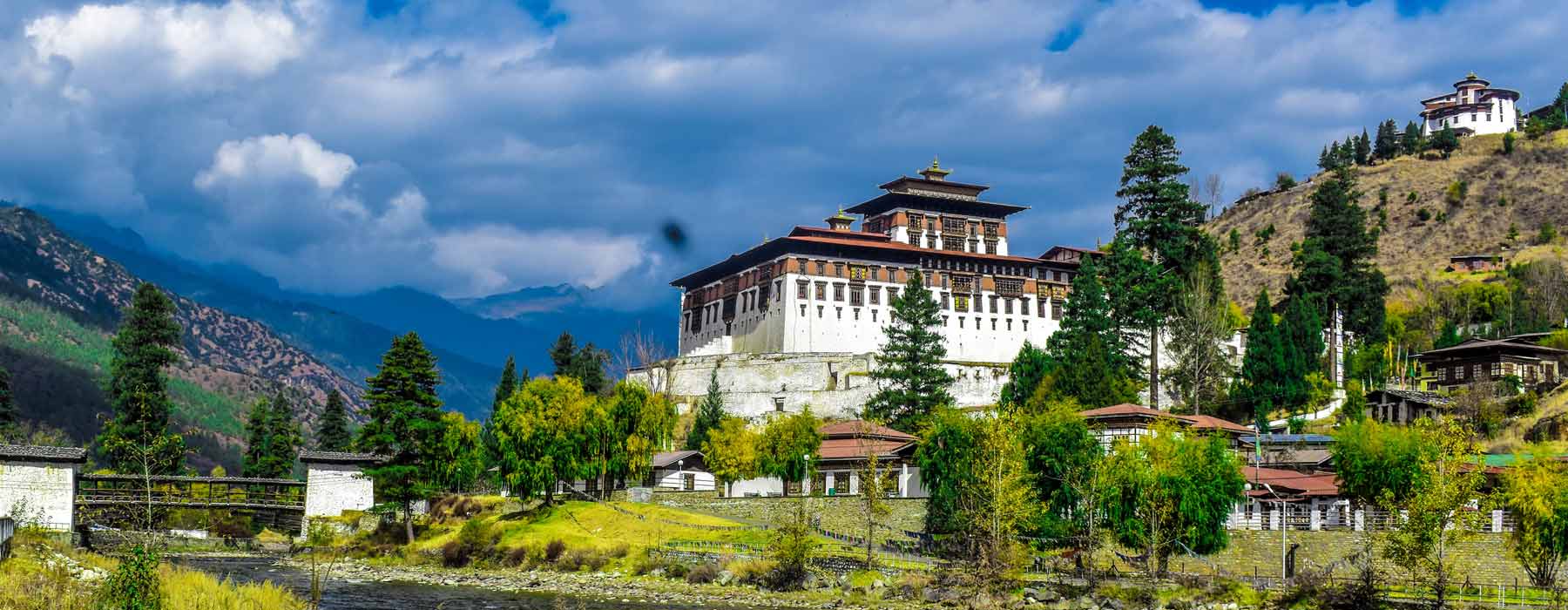 ( Rinpung Dzong is the most visited sightseeing place in bhutan and mostly tourists must visit here )
( Rinpung Dzong is the most visited sightseeing place in bhutan and mostly tourists must visit here )
Rinpung Dzong
Paro Rinpung Dzong, also known as the Paro Fortress, is a majestic structure located on the banks of the Paro River. Built in the 15th century by the Shabdrung Ngawang Namgyal, the dzong is one of Bhutan’s most important religious and administrative centers. The dzong’s name, meaning "fortress on a heap of jewels," reflects its significance in Bhutanese history.
It houses several temples, and the monk body of Paro Dzong is responsible for the administration of the district. The structure itself is a masterpiece of Bhutanese architecture, with beautiful wooden windows, intricately carved beams, and painted walls depicting scenes from Buddhist teachings. The dzong's most significant feature is the Utse, a central tower that rises above the surrounding buildings and offers a panoramic view of the valley.
3. Drukgyel Dzong
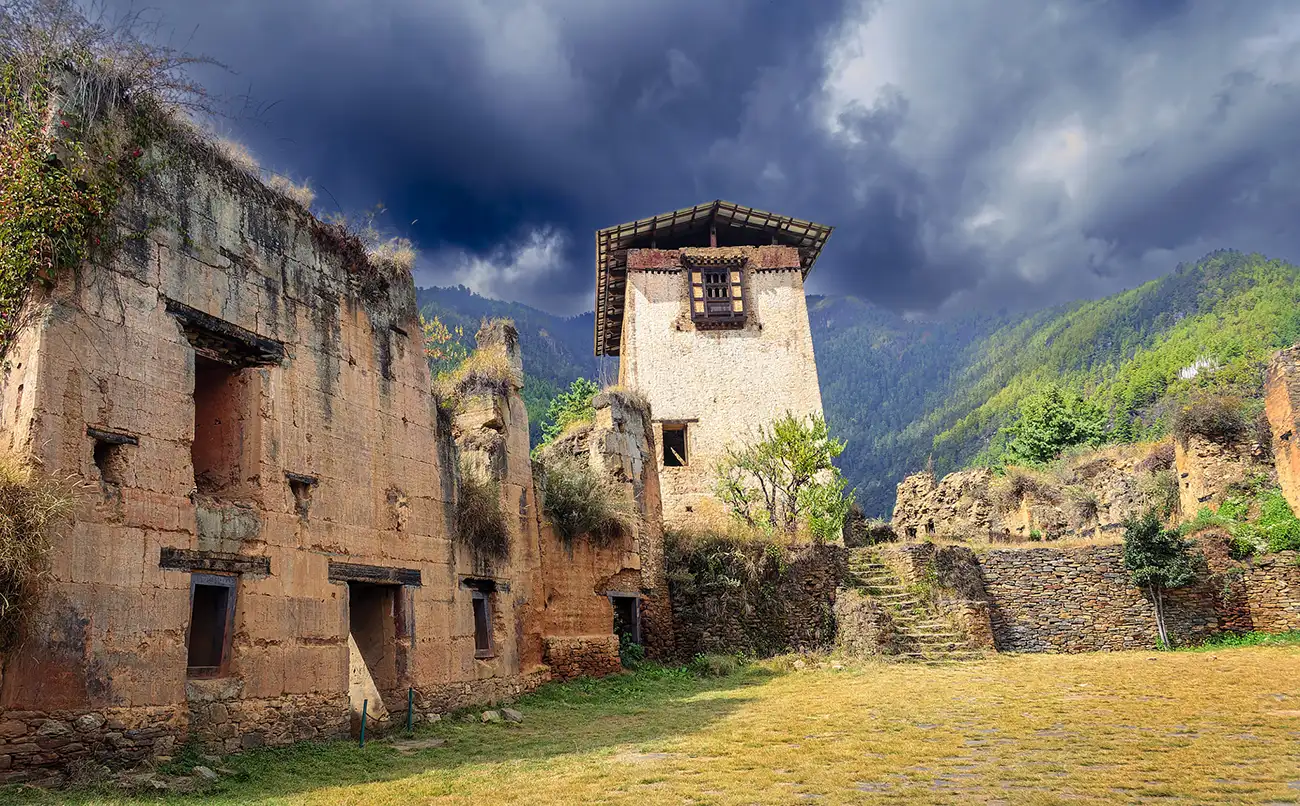 ( Drukgyel Dzong is the most visited sightseeing place in bhutan and mostly tourists must visit here )
( Drukgyel Dzong is the most visited sightseeing place in bhutan and mostly tourists must visit here )
Drukgyel Dzong Sightseeing
Located on the outskirts of Paro Valley, Drukgyel Dzong stands as a historic monument and a testament to Bhutan’s resistance against invasions. The dzong was originally built in the 17th century to commemorate Bhutan's victory over Tibetan invaders. The name "Drukgyel" translates to "Victory" in Dzongkha, symbolizing the fortress's role in protecting Bhutan from external threats.
Although the dzong was damaged by fire in the 1950s, it still remains an important historical site and offers visitors a glimpse into Bhutan's military history. The dzong was strategically positioned at the top of a hill, providing sweeping views of the Paro Valley and the surrounding mountains, including the majestic Mount Jomolhari.
4. Kyichu Lhakhang
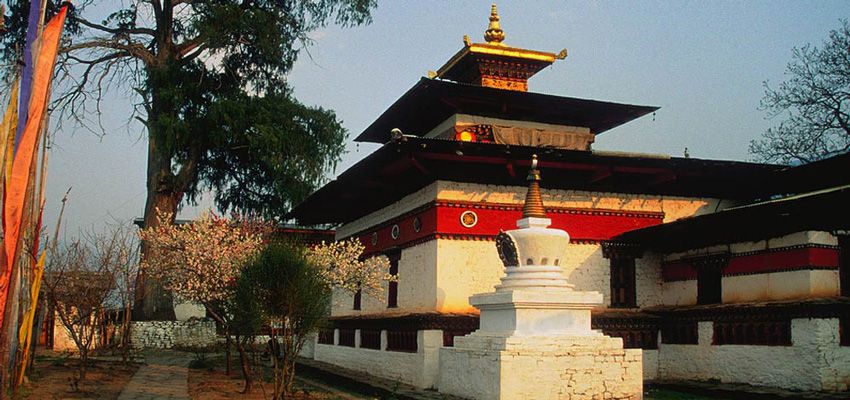 ( Kyichu Lhakhang is the most visited sightseeing place in bhutan and mostly tourists must visit here )
( Kyichu Lhakhang is the most visited sightseeing place in bhutan and mostly tourists must visit here )
Kyichu Lhakhang Sightseeing
Kyichu Lhakhang, one of the oldest and most significant temples in Bhutan, is located just outside the town of Paro. The temple was built in the 7th century by King Songtsen Gampo of Tibet, who is credited with uniting Bhutan and Tibet. The temple is part of a series of temples built by the king to subdue a demon that was believed to be obstructing the spread of Buddhism in the region.
The architecture of Kyichu Lhakhang is simple yet elegant, with beautiful murals and carvings inside. The temple is an important pilgrimage site for Bhutanese Buddhists, and it’s known for its peaceful and serene atmosphere. The inner courtyard features two temples, and visitors can observe monks as they go about their daily prayers and rituals.
5. National Museum of Bhutan Ta Dzong
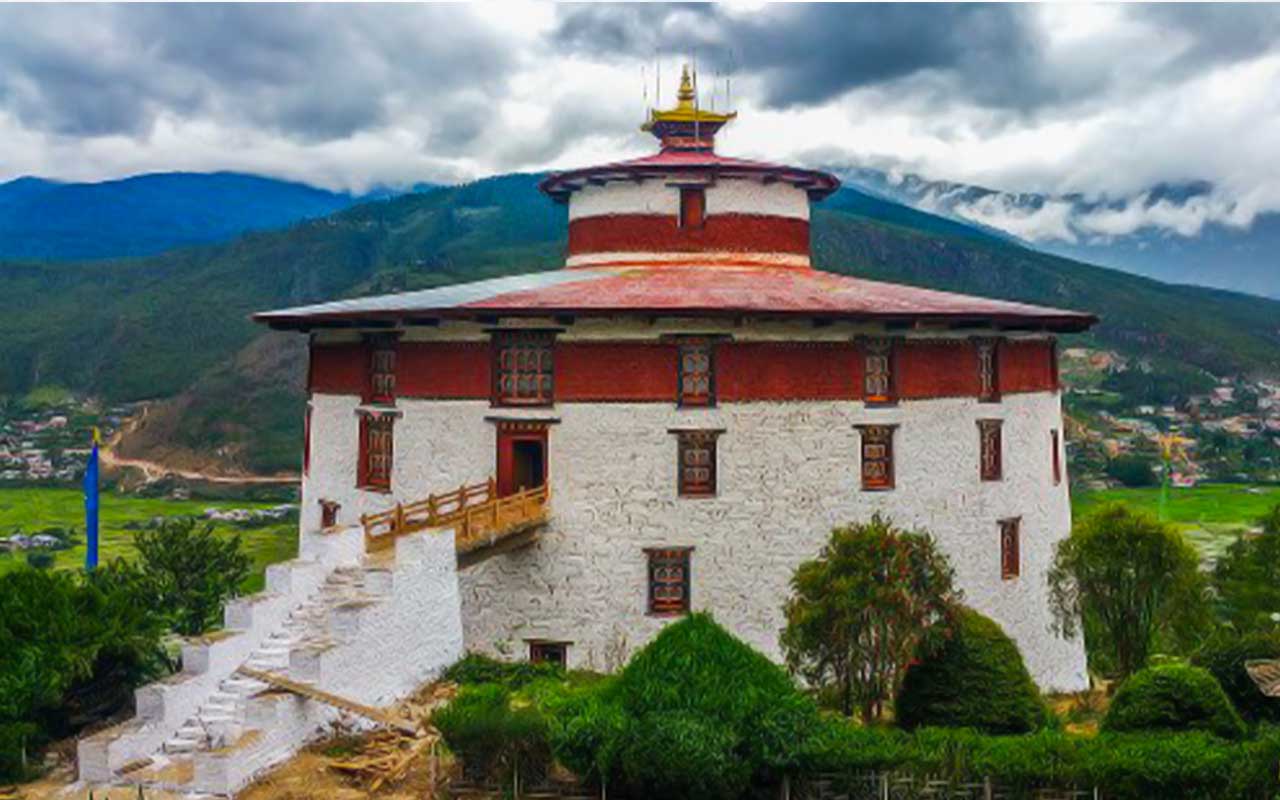 ( National Museum of Bhutan Ta Dzong is the most visited sightseeing place in bhutan and mostly tourists must visit here )
( National Museum of Bhutan Ta Dzong is the most visited sightseeing place in bhutan and mostly tourists must visit here )
National Museum of Bhutan (Ta Dzong)
The National Museum of Bhutan, located in the Ta Dzong building, is an essential stop for anyone wanting to delve deeper into Bhutanese culture and history. The Ta Dzong itself is a historical structure, originally built as a watchtower in the 17th century to protect the Paro Dzong from potential invasions. Today, it houses a comprehensive collection of artifacts that showcase Bhutan's rich cultural and historical heritage.
The museum’s exhibits include traditional Bhutanese attire, religious statues, and artifacts, as well as displays about the country's natural history, including its flora, fauna, and the significance of the Himalayas to the Bhutanese people. One of the most intriguing parts of the museum is its collection of ancient Bhutanese weapons, armor, and other items related to Bhutan’s military history.
6. Tashichho Dzong
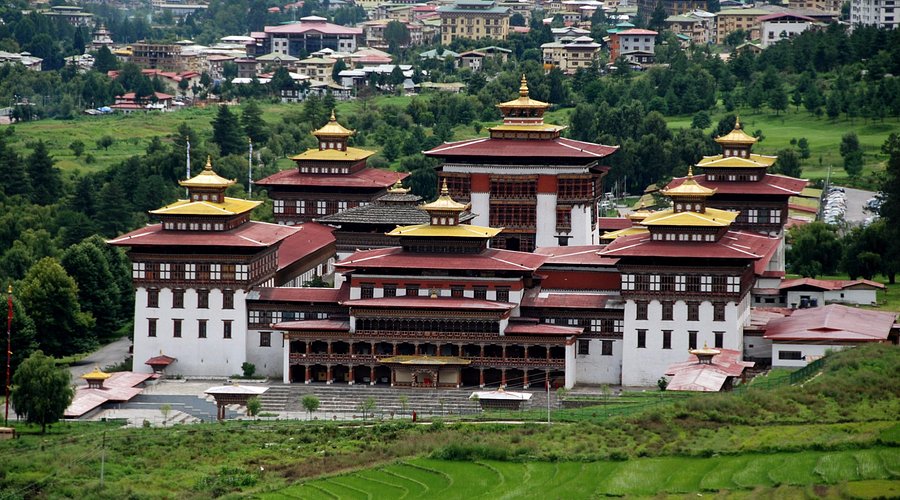 ( Tashichho Dzong is the most visited sightseeing place in bhutan and mostly tourists must visit here )
( Tashichho Dzong is the most visited sightseeing place in bhutan and mostly tourists must visit here )
Tashichho Dzong Sightseeing
Tashichho Dzong, located on the banks of the Wang Chhu River in Thimphu, is one of the most significant landmarks in Bhutan. This fortress-monastery, originally built in 1641 by Zhabdrung Ngawang Namgyal, is an iconic example of Bhutanese architecture. It serves as the seat of Bhutan’s government, housing the office of the king, the ministries, and the central monastic body of Bhutan.
The dzong’s architecture is a striking blend of traditional Bhutanese designs, with massive whitewashed walls, intricately carved wooden windows, and golden-roofed structures that stand out against the backdrop of the lush green hills surrounding it. The building’s central courtyard is a tranquil space where visitors can enjoy the serenity and beauty of the monastery. Inside, the dzong contains temples adorned with beautiful Buddhist murals, statues, and intricate wood carvings that depict various aspects of Bhutanese spiritual life.
7. Buddha Dordenma
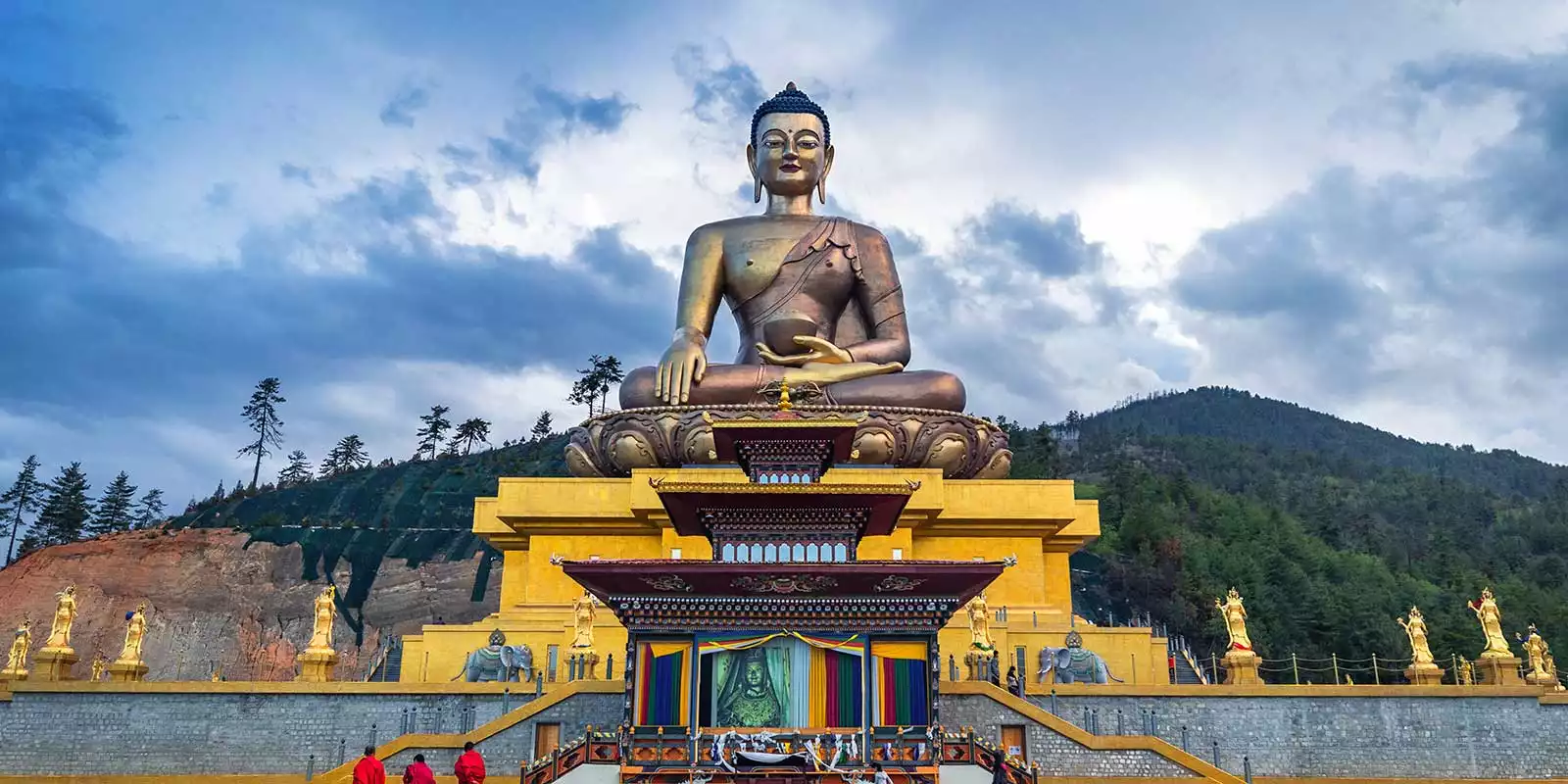 ( Buddha Dordenma is the most visited sightseeing place in bhutan and mostly tourists must visit here )
( Buddha Dordenma is the most visited sightseeing place in bhutan and mostly tourists must visit here )
Buddha Dordenma Sightseeing
The Buddha Dordenma, an imposing statue of Shakyamuni Buddha, is one of the most remarkable landmarks in Thimphu. Standing at 51.5 meters tall, it is one of the largest Buddha statues in the world and is located on a hilltop overlooking the Thimphu Valley. The statue was inaugurated in 2015 and is a symbol of peace, prosperity, and spiritual awakening for Bhutan.
The Buddha Dordenma is made of bronze and is gilded in gold, giving it a radiant and awe-inspiring appearance. Inside the statue, there are thousands of smaller Buddha statues, and the structure itself is home to a meditation hall. The surrounding area has beautiful landscaped gardens, peaceful surroundings, and a panoramic view of the valley below.
8. National Memorial Chorten
 ( National Memorial Chorten is the most visited sightseeing place in bhutan and mostly tourists must visit here )
( National Memorial Chorten is the most visited sightseeing place in bhutan and mostly tourists must visit here )
National Memorial Chorten Sightseeing
The National Memorial Chorten in Thimphu is a prominent religious site and one of the most visited places in Bhutan. Built in 1974 in memory of the third king of Bhutan, King Jigme Dorji Wangchuck, this whitewashed stupa stands as a symbol of peace and a place for people to come together to meditate and pay their respects.
The chorten’s architecture is a unique blend of traditional Bhutanese and Tibetan styles, with intricate paintings, carvings, and statues that depict important Buddhist teachings. The National Memorial Chorten is often referred to as the “center of spiritual life” in Thimphu, as it is a popular spot for locals and visitors alike to engage in prayer, circumambulate, and offer their reverence. Inside the chorten, there are beautiful murals and religious icons that represent the cycle of life and the teachings of Buddha.
9. Changangkha Lhakhang
 ( Changangkha Lhakhang is the most visited sightseeing place in bhutan and mostly tourists must visit here )
( Changangkha Lhakhang is the most visited sightseeing place in bhutan and mostly tourists must visit here )
Changangkha Lhakhang Sightseeing
Changangkha Lhakhang, perched on a hilltop overlooking the Thimphu Valley, is one of the oldest and most revered temples in Bhutan. Built in the 12th century by Lama Phajo Drugom Zhigpo, a renowned Buddhist saint, the temple is dedicated to Avalokiteshvara, the Buddha of Compassion. Changangkha Lhakhang is an important spiritual site and remains a popular pilgrimage destination for Bhutanese Buddhists, particularly parents who bring their newborn children to receive blessings.
The temple’s architecture is traditional and striking, with large prayer wheels, beautiful wall paintings, and carvings of Buddhist deities. The interior of the temple is adorned with intricate murals and a central statue of Avalokiteshvara, which is a focal point for meditation and prayer. The temple offers an impressive view of the Thimphu Valley and is surrounded by lush forests, adding to the sense of peace and tranquility.
10. Tango Monastery
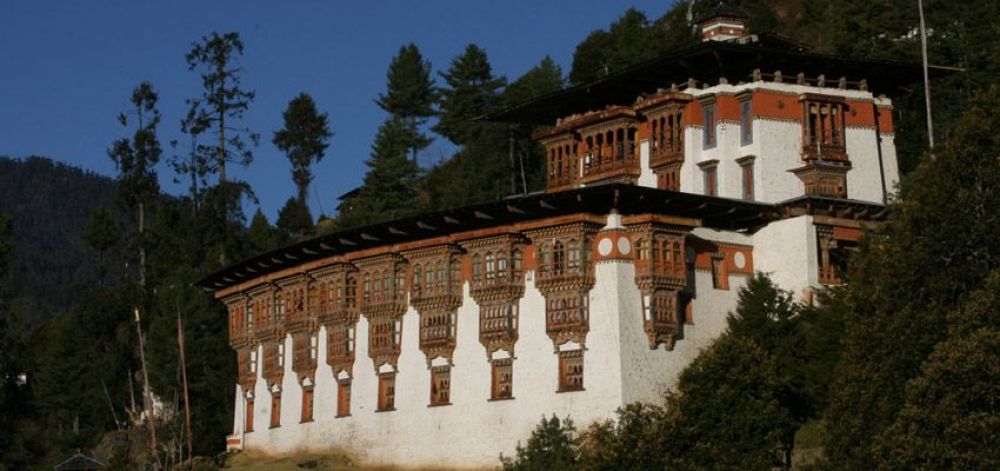 ( Tango Monastery is the most visited sightseeing place in bhutan and mostly tourists must visit here )
( Tango Monastery is the most visited sightseeing place in bhutan and mostly tourists must visit here )
Tango Monastery Sightseeing
Tango Monastery is one of the most revered monasteries in Bhutan, located about 14 kilometers north of Thimphu, perched on a hill in the beautiful Wang Chhu Valley. The monastery, which was founded in the 12th century by Lama Gyalwa Lhanangpa, has become a significant site for Buddhist scholars and practitioners. The name "Tango" comes from the Tibetan word for "horse," as the monastery was historically associated with horses used for religious purposes.
It is a place of profound spirituality, meditation, and monastic learning. Visitors must hike up a steep trail for about an hour to reach the monastery, but the effort is well worth it. The hike provides visitors with spectacular views of the surrounding valley, lush forests, and the majestic mountains. Upon reaching the monastery, visitors are greeted by a striking architectural structure that features traditional Bhutanese designs.
11. Punakha Dzong
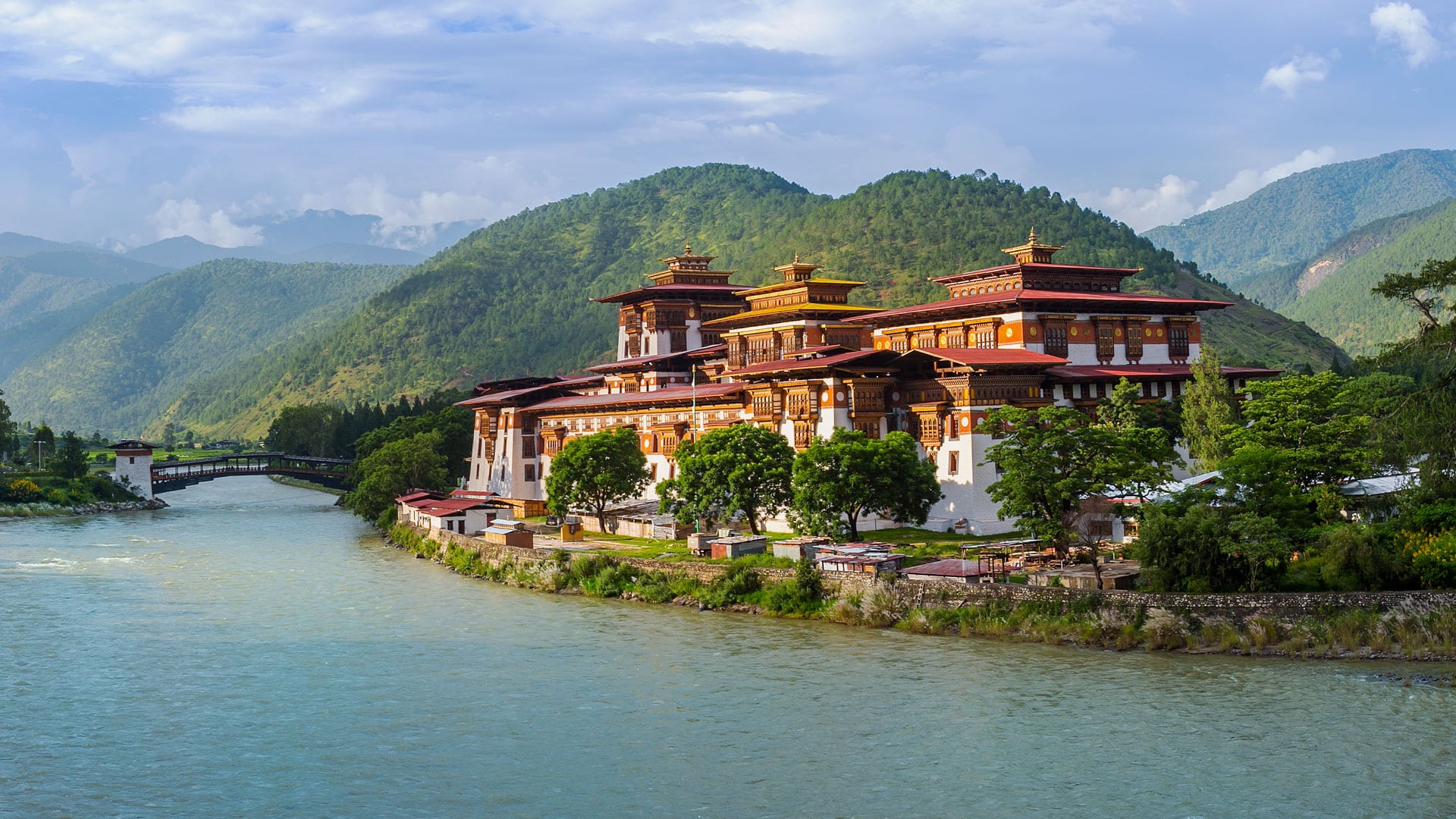 ( Punakha Dzong is the most visited sightseeing place in bhutan and mostly tourists must visit here )
( Punakha Dzong is the most visited sightseeing place in bhutan and mostly tourists must visit here )
Punakha Dzong Sightseeing
Punakha Dzong, often referred to as the "Palace of Great Happiness," is one of the most beautiful and historically significant structures in Bhutan. Located at the confluence of the Pho Chhu and Mo Chhu rivers, this majestic fortress-monastery is a must-visit for anyone exploring Punakha. Built in 1637 by Zhabdrung Ngawang Namgyal, the dzong holds a prominent place in Bhutan’s history and culture.
It was the seat of the government until Thimphu became the capital in the 1950s and is still the winter residence of the central monastic body. The dzong’s architecture is a stunning example of Bhutanese craftsmanship, with intricately carved wooden windows, gold-plated roofs, and massive stone walls that give it a fortress-like appearance.
12. Chimi Lhakhang
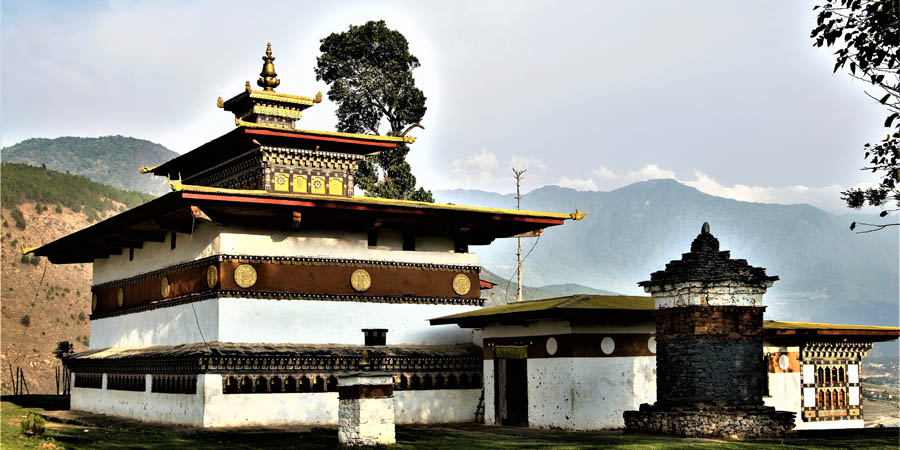 ( Chimi Lhakhang is the most visited sightseeing place in bhutan and mostly tourists must visit here )
( Chimi Lhakhang is the most visited sightseeing place in bhutan and mostly tourists must visit here )
Chimi Lhakhang Sightseeing
Chimi Lhakhang, also known as the Temple of Fertility, is a unique and revered site located in the Punakha Valley. The temple, built in the 15th century by Lama Drukpa Kunley, also known as the "Divine Madman," is famous for its association with fertility and the blessings it bestows upon couples trying to conceive. According to legend, Drukpa Kunley was a spiritual teacher who used unconventional methods to spread his teachings, and his unique approach to life has earned him a place of great reverence in Bhutanese culture.
The temple is set amidst beautiful farmland and can be reached by a pleasant walk through fields of mustard flowers, rice paddies, and bamboo groves. As visitors approach the temple, they are greeted by a large wooden statue of a phallus, a symbol associated with Drukpa Kunley’s teachings.
13. Khamsum Yulley Namgyal Chorten
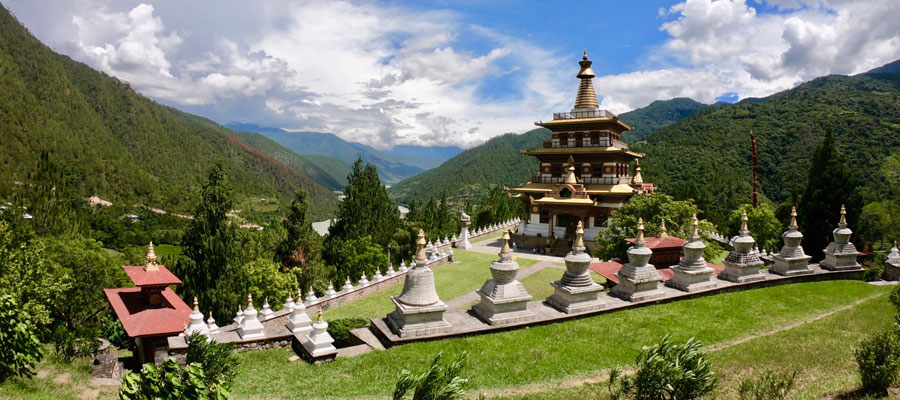 ( Khamsum Yulley Namgyal Chorten is the most visited sightseeing place in bhutan and mostly tourists must visit here )
( Khamsum Yulley Namgyal Chorten is the most visited sightseeing place in bhutan and mostly tourists must visit here )
Khamsum Yulley Namgyal Chorten Sightseeing
Khamsum Yulley Namgyal Chorten is a stunning Buddhist stupa located on a hilltop overlooking the Punakha Valley. The chorten, completed in 1999, was built by the Queen Mother, Ashi Tshering Yangdon Wangchuck, as an offering to the well-being of the royal family and the nation. The chorten is dedicated to the memory of the first king of Bhutan, Ugyen Wangchuck, and it is a symbol of peace and prosperity for the country.
The journey to the chorten involves a short but steep hike through lush forests, offering visitors the chance to enjoy the tranquil surroundings and catch glimpses of the Punakha Valley below. The chorten itself is a masterpiece of Bhutanese architecture, with intricate carvings, prayer wheels, and murals depicting Buddhist deities and teachings.
14. Punakha Suspension Bridge
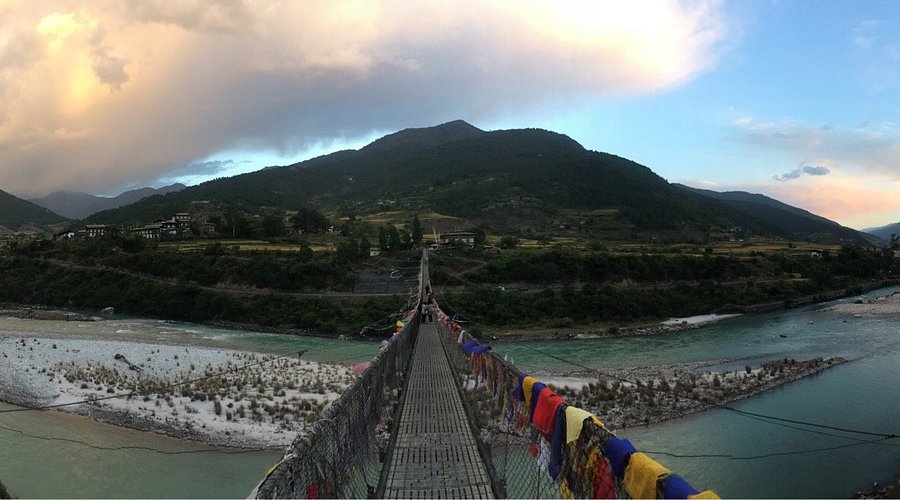 ( Punakha Suspension Bridge is the most visited sightseeing place in bhutan and mostly tourists must visit here )
( Punakha Suspension Bridge is the most visited sightseeing place in bhutan and mostly tourists must visit here )
Punakha Suspension Bridge Sightseeing
The Punakha Suspension Bridge is one of the longest suspension bridges in Bhutan, stretching 160 meters across the Mo Chhu River. Located near the Punakha Dzong, this bridge offers an exciting and scenic walk for visitors who want to experience the natural beauty of the region from a unique perspective. The bridge was originally built to provide easy access for locals living in the remote villages across the river.
Today, it is one of the most popular tourist attractions in Punakha, known for its thrilling height and breathtaking views. The walk across the bridge offers spectacular views of the Punakha Valley, including lush green rice fields, the Punakha Dzong, and the surrounding mountains.
15. Sangchhen Dorji Lhuendrup Lhakhang
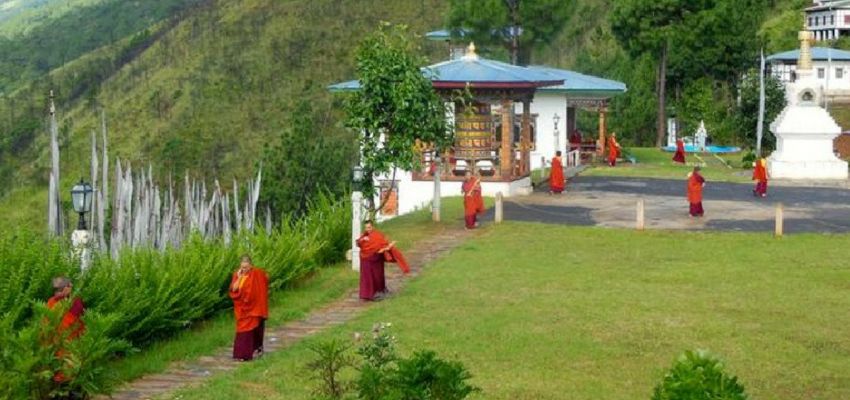 ( Sangchhen Dorji Lhuendrup Lhakhang is the most visited sightseeing place in bhutan and mostly tourists must visit here )
( Sangchhen Dorji Lhuendrup Lhakhang is the most visited sightseeing place in bhutan and mostly tourists must visit here )
Sangchhen Dorji Lhuendrup Lhakhang Sightseeing
Sangchhen Dorji Lhuendrup Lhakhang is a serene Buddhist temple located in the hills above Punakha, offering panoramic views of the valley. The temple was built in 2015 and is dedicated to the goddess Sangchhen Dorji Lhuendrup, who is believed to protect Bhutan from negative forces and promote the well-being of the people. The temple is a popular site for pilgrims and tourists alike, who come to admire its peaceful ambiance, intricate architecture, and beautiful surroundings.
The hike to the temple is a short but rewarding journey, taking visitors through lush forests of pine and rhododendron trees. The temple itself is an elegant structure with ornate paintings and carvings depicting various Buddhist deities. The central statue of Avalokiteshvara is a major highlight of the temple, along with the panoramic views of the Punakha Valley and the Himalayas.
16. Gangtey Monastery Gangtey Gonpa
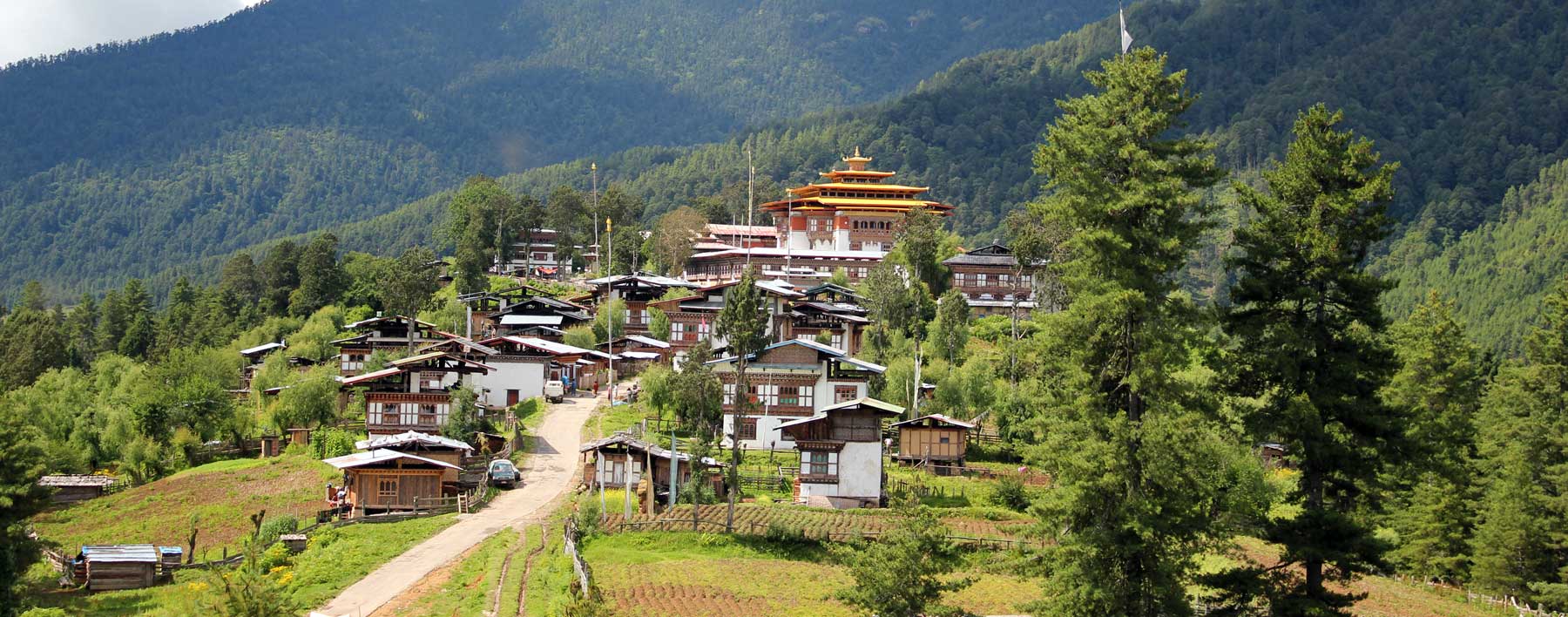 ( Gangtey Monastery Gangtey Gonpa is the most visited sightseeing place in bhutan and mostly tourists must visit here )
( Gangtey Monastery Gangtey Gonpa is the most visited sightseeing place in bhutan and mostly tourists must visit here )
Gangtey Monastery (Gangtey Gonpa) Sightseeing
Gangtey Monastery, also known as Gangtey Gonpa, is one of the most significant Buddhist monasteries in Bhutan, located in the heart of the Phobjikha Valley. Perched on a hilltop, it offers breathtaking views of the surrounding valley and the beautiful landscape of Phobjikha. This monastery is of great cultural and religious importance, as it is home to the Nyingma school of Tibetan Buddhism. The monastery was founded in the 16th century by the great Buddhist master, Pema Lingpa, and has since been a place of pilgrimage and spiritual learning.
The architecture of Gangtey Monastery is a unique blend of traditional Bhutanese style and Tibetan influences. The monastery is surrounded by traditional Bhutanese buildings and prayer flags, giving it a serene and peaceful atmosphere. Inside, the temple houses various religious statues, paintings, and murals that depict the life of Guru Rinpoche and other Buddhist deities. The monastery is an active center of learning, and many monks reside here, practicing meditation and studying Buddhist scriptures.
17. Phobjikha Valley
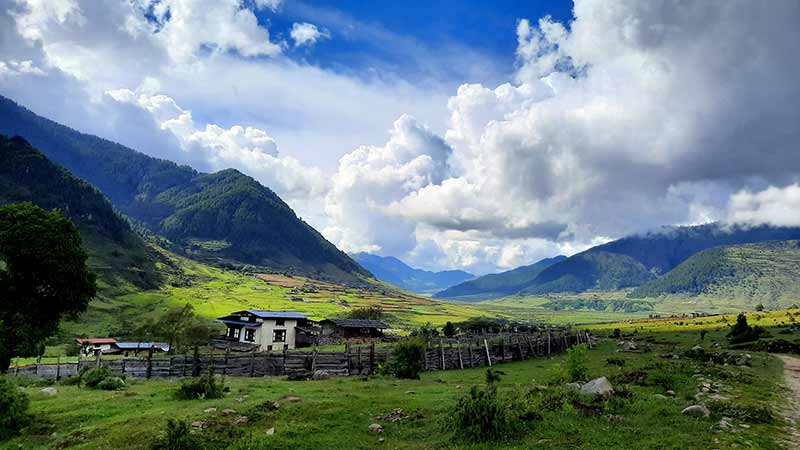 ( Phobjikha Valley is the most visited sightseeing place in bhutan and mostly tourists must visit here )
( Phobjikha Valley is the most visited sightseeing place in bhutan and mostly tourists must visit here )
Phobjikha Valley Sightseeing
Phobjikha Valley is one of the most stunning and serene valleys in Bhutan, offering visitors a chance to experience the beauty of the natural landscape and the tranquility of rural Bhutan. The valley is located at an elevation of around 3,000 meters and is known for its breathtaking views of the Black Mountains and lush green fields. Phobjikha Valley is also famous for its association with the black-necked cranes, which migrate here every winter from Tibet, making it one of the most significant wildlife conservation areas in Bhutan.
The valley itself is a beautiful blend of wetlands, forests, and traditional Bhutanese villages. The fertile land is used for farming, with fields of rice, millet, and barley, while the wetlands provide a home for a diverse range of plant and animal species. The most iconic feature of Phobjikha Valley is the peaceful atmosphere that surrounds the area, making it an ideal destination for nature lovers, bird watchers, and those seeking respite from the hustle and bustle of everyday life.
18. Black-necked Crane Information Centre
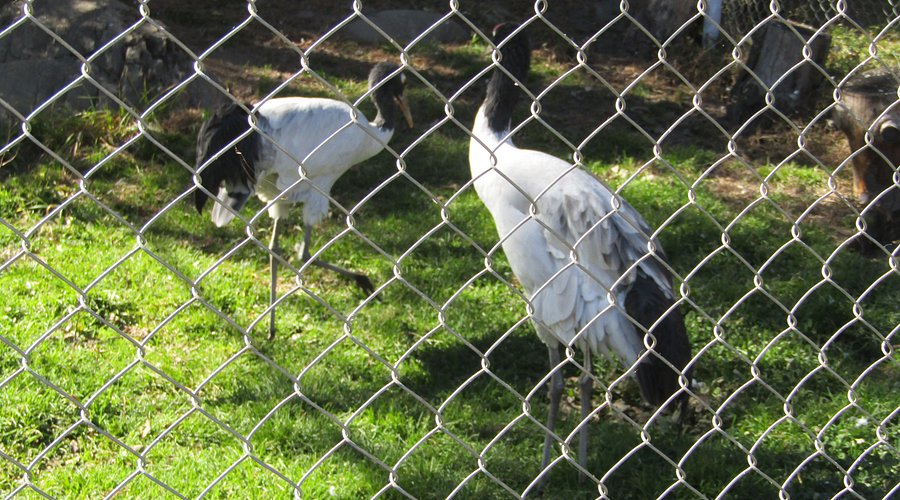 ( Black-necked Crane Information Centre is the most visited sightseeing place in bhutan and mostly tourists must visit here )
( Black-necked Crane Information Centre is the most visited sightseeing place in bhutan and mostly tourists must visit here )
Black-necked Crane Information Centre Sightseeing
The Black-necked Crane Information Centre is located near the Phobjikha Valley and serves as an educational hub for visitors interested in learning about the conservation of the endangered black-necked cranes. The center is dedicated to raising awareness about the importance of preserving these magnificent birds and their habitat in Bhutan. These cranes, which migrate to Phobjikha Valley every winter from Tibet, are a symbol of Bhutan’s commitment to protecting its natural heritage.
The information center provides a wealth of knowledge about the black-necked cranes, their migratory patterns, and the challenges they face due to habitat loss and environmental changes. Visitors to the center can explore exhibits, watch documentaries, and learn about the efforts being made by local communities and conservation organizations to protect the cranes and their environment. The center also organizes educational programs and outreach activities, such as bird-watching tours and talks, where visitors can learn more about the cranes and the importance of wetland ecosystems.
19. Phobjikha Nature Trail
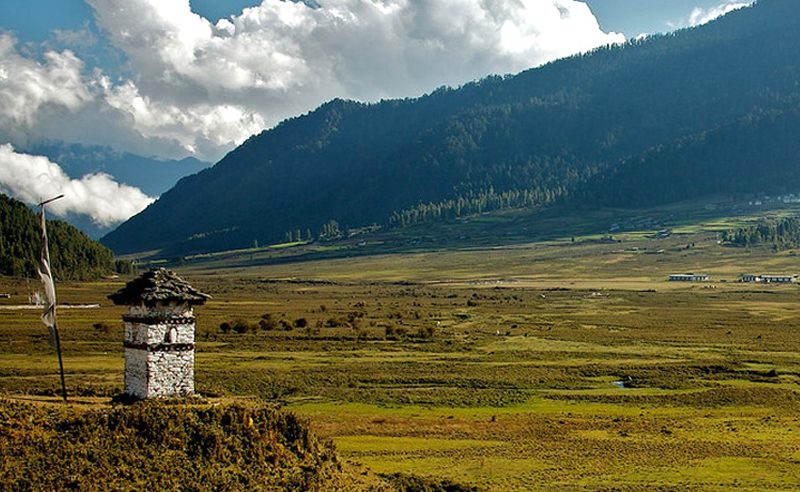 ( Phobjikha Nature Trail is the most visited sightseeing place in bhutan and mostly tourists must visit here )
( Phobjikha Nature Trail is the most visited sightseeing place in bhutan and mostly tourists must visit here )
Phobjikha Nature Trail
The Phobjikha Nature Trail is a scenic and peaceful hiking trail that allows visitors to experience the natural beauty of the Phobjikha Valley while learning about the local flora, fauna, and cultural heritage. The trail is one of the most popular outdoor activities in the region, attracting nature lovers, birdwatchers, and those looking to immerse themselves in Bhutan’s tranquil landscapes.
The trail offers a variety of terrains, ranging from lush forests and wetlands to open meadows, providing hikers with a chance to see the diverse plant and animal life that thrives in the valley. The walk is relatively easy, making it suitable for visitors of all ages and fitness levels. Along the trail, visitors will encounter a range of species, including colorful birds, such as the black-necked cranes, which are often spotted in the wetlands during the winter months. The trail also passes through traditional Bhutanese villages, where visitors can interact with locals and get a glimpse of life in the rural parts of Bhutan.
20. Jambay Lhakhang
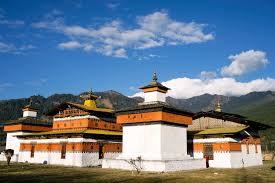 ( Jambay Lhakhang is the most visited sightseeing place in bhutan and mostly tourists must visit here )
( Jambay Lhakhang is the most visited sightseeing place in bhutan and mostly tourists must visit here )
Jambay Lhakhang Sightseeing
Jambay Lhakhang, one of the oldest and most revered temples in Bhutan, is located in the Bumthang Valley. Built in the 7th century by the Tibetan King Songtsen Gampo, Jambay Lhakhang holds immense historical and religious significance. It is part of a series of temples that were constructed by the king as a means to subdue the evil forces in the region.
The temple is dedicated to the Maitreya Buddha, and its architecture is a prime example of traditional Bhutanese design, with intricate carvings, vibrant prayer flags, and traditional paintings adorning the walls.The temple has a rich cultural history and is a focal point for locals and pilgrims who visit to seek blessings. One of the most important events at Jambay Lhakhang is the annual Jambay Lhakhang Drup, a sacred festival that attracts devotees from all over Bhutan.
21. Kurjey Lhakhang
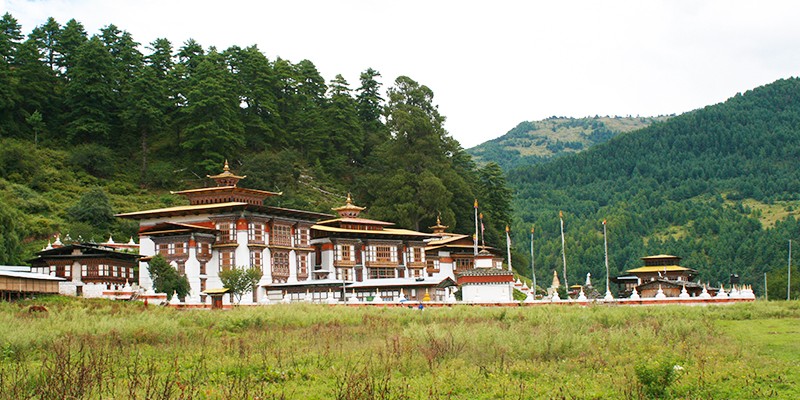 ( Kurjey Lhakhang is the most visited sightseeing place in bhutan and mostly tourists must visit here )
( Kurjey Lhakhang is the most visited sightseeing place in bhutan and mostly tourists must visit here )
Kurjey Lhakhang Sightseeing
Kurjey Lhakhang is one of the most important religious sites in Bhutan and holds a special place in the hearts of the Bhutanese people. Situated in the beautiful Bumthang Valley, the temple is known for its association with the sacred legend of Guru Rinpoche (Padmasambhava). According to legend, Guru Rinpoche meditated in a cave at Kurjey Lhakhang, where he left his imprint on the rock, and it is believed that his blessings still reside in this sacred place. The temple was built in the 17th century by the first king of Bhutan, Ugyen Wangchuck, and it consists of three main temples.
Each temple holds relics, statues, and sacred offerings, creating a deeply spiritual atmosphere for visitors.The most significant aspect of Kurjey Lhakhang is the sacred cave where Guru Rinpoche meditated, and it is still visible today. Pilgrims from across Bhutan visit Kurjey Lhakhang to pay homage and seek spiritual blessings.
22. Tamshing Lhakhang
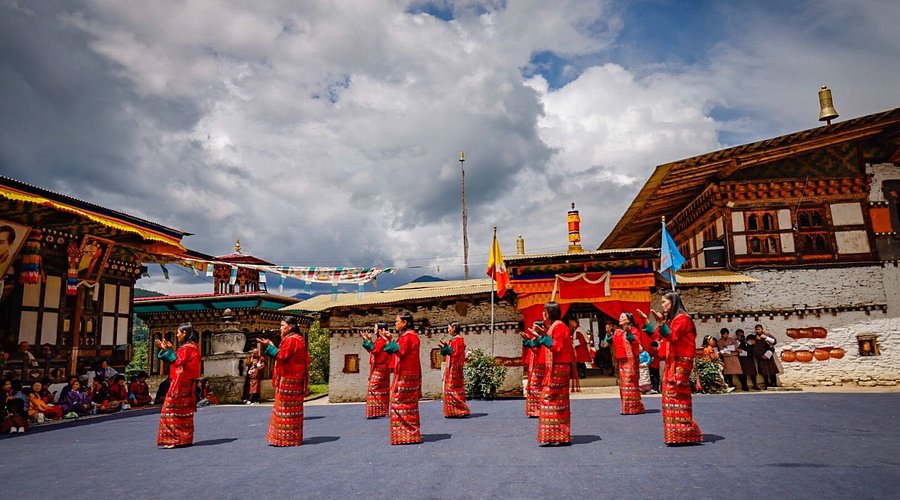 ( Tamshing Lhakhang is the most visited sightseeing place in bhutan and mostly tourists must visit here )
( Tamshing Lhakhang is the most visited sightseeing place in bhutan and mostly tourists must visit here )
Tamshing Lhakhang Sightseeing
Tamshing Lhakhang, located on the northern side of the Bumthang Valley, is another sacred and historical site in Bhutan. The temple was founded in 1501 by the great Buddhist master Pema Lingpa, who is revered for his contributions to the Nyingma school of Tibetan Buddhism. The name "Tamshing" means "Temple of the Good Message," and it is famous for its association with the teachings of Pema Lingpa, who was a direct descendant of Guru Rinpoche. Tamshing Lhakhang is one of the most important pilgrimage sites in Bhutan, and it is especially popular among those who follow the teachings of the Nyingma tradition.
The temple itself is a beautiful example of traditional Bhutanese architecture, with whitewashed walls, intricately carved wooden windows, and vibrant murals depicting the life of Guru Rinpoche. The interior of the temple is equally impressive, with religious artifacts, statues, and paintings that showcase the rich spiritual heritage of Bhutan. One of the highlights of Tamshing Lhakhang is its sacred thangka paintings, which depict the life and teachings of Guru Rinpoche, as well as other prominent Buddhist figures.
23. Jakar Dzong
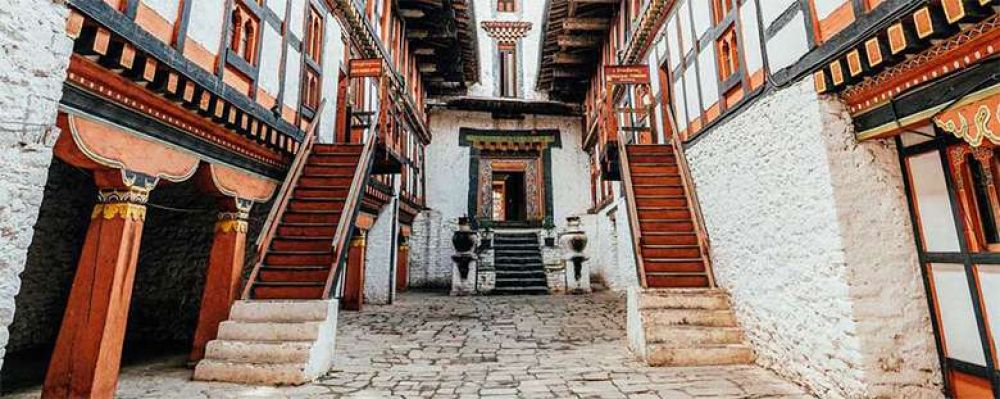 ( Jakar Dzong is the most visited sightseeing place in bhutan and mostly tourists must visit here )
( Jakar Dzong is the most visited sightseeing place in bhutan and mostly tourists must visit here )
Jakar Dzong Sightseeing
Jakar Dzong, also known as the "Castle of the White Bird," is one of the most iconic structures in the Bumthang Valley and is the administrative and religious center of the Bumthang District. The dzong was built in the 16th century by the famous Bhutanese lama Ngagi Wangchuk, and it has played an important role in the spiritual and political life of Bhutan. The dzong is strategically situated on a hilltop, offering panoramic views of the Bumthang Valley, the Chamkhar River, and the surrounding mountains. Its impressive architecture and historical significance make it a must-see site for visitors exploring the Bumthang region.
Jakar Dzong is an excellent example of traditional Bhutanese fortress architecture, with its thick stone walls, intricate woodwork, and large courtyards. The dzong serves as the administrative seat for the local government, but it also has a monastic complex where monks reside and perform religious rituals. The most important temple inside the dzong is dedicated to Guru Rinpoche, the founder of Tibetan Buddhism, and it is adorned with beautiful murals and statues depicting the guru’s life and teachings.
24. Ura Valley
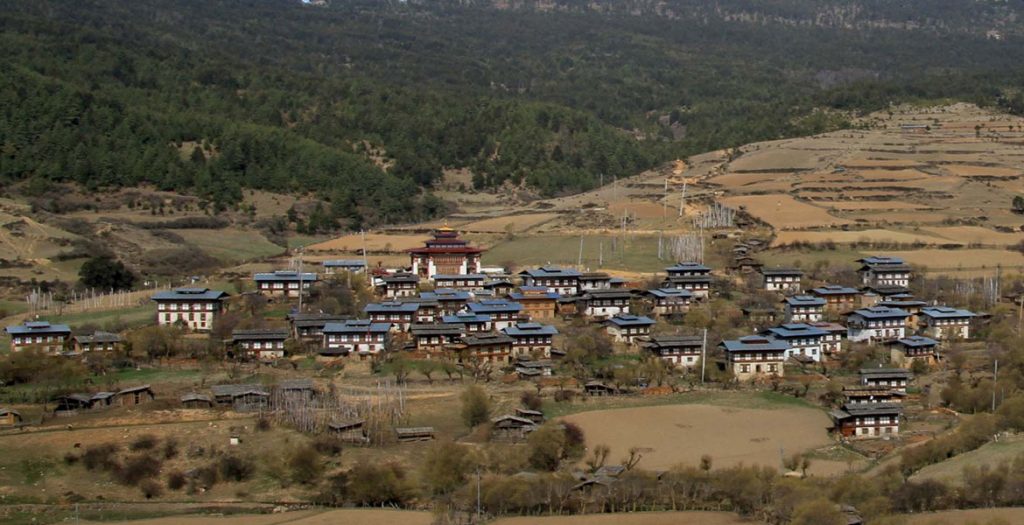 ( Ura Valley is the most visited sightseeing place in bhutan and mostly tourists must visit here )
( Ura Valley is the most visited sightseeing place in bhutan and mostly tourists must visit here )
Ura Valley Sightseeing
Ura Valley is a hidden gem located in the Bumthang District, known for its pristine natural beauty and traditional Bhutanese culture. The valley is situated at an elevation of about 3,200 meters and is surrounded by towering mountains, lush forests, and peaceful meadows. Ura Valley is considered one of the most picturesque valleys in Bhutan, offering visitors a chance to experience rural life in its most authentic form.
The valley is home to the Ura Temple, which dates back to the 17th century and is one of the oldest temples in Bhutan. The temple is a sacred site for locals, and visitors can often see pilgrims offering prayers and making offerings at the temple. Ura Valley is also famous for its traditional Bhutanese farmhouses, which are built using wood and stone and have the characteristic sloping roofs. Visitors can take a walk through the village and interact with the friendly locals, who are known for their hospitality and warmth.
25. Haa Valley
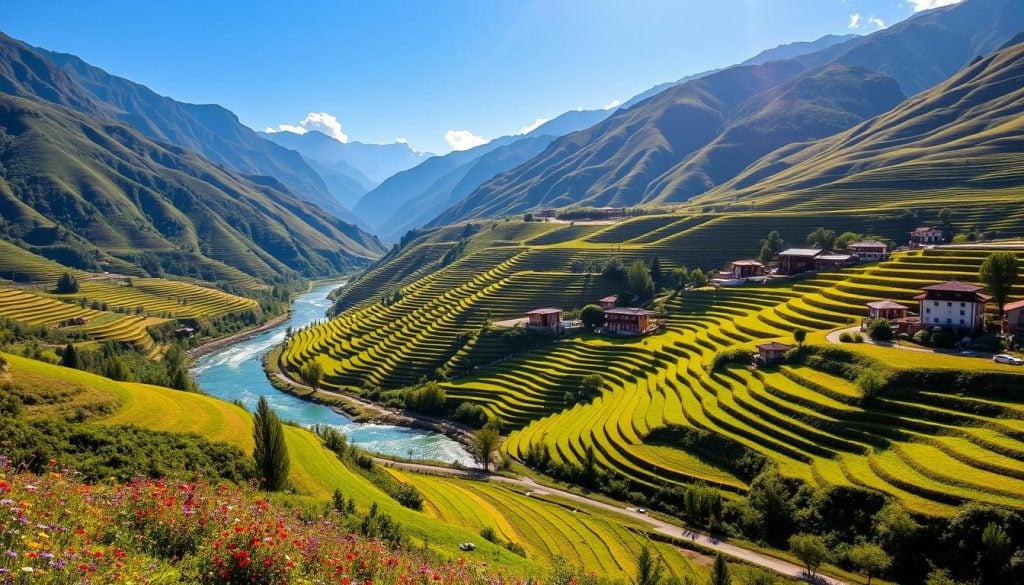 ( Haa Valley is the most visited sightseeing place in bhutan and mostly tourists must visit here )
( Haa Valley is the most visited sightseeing place in bhutan and mostly tourists must visit here )
Haa Valley Sightseeing
Haa Valley, one of Bhutan’s most serene and untouched regions, offers a unique blend of natural beauty, traditional culture, and spiritual heritage. Located at an elevation of about 2,800 meters, the valley is surrounded by snow-capped mountains, lush forests, and scenic meadows, making it a perfect destination for nature lovers and those looking for a peaceful retreat. Unlike the more frequented tourist spots in Bhutan, Haa Valley is relatively unexplored, providing a rare opportunity to experience Bhutanese rural life in its most authentic form.
One of the most distinctive features of Haa Valley is its pristine environment, with clear blue skies, fresh air, and rich biodiversity. The valley is home to several sacred temples, monasteries, and fortresses, which offer visitors a chance to explore Bhutan's deep spiritual roots. The landscape, dotted with traditional Bhutanese farmhouses and meadows filled with wildflowers, adds to the charm of this lesser-known destination. The valley is also famous for its festivals, the Haa Summer Festival being the most notable, where locals celebrate their culture, traditions, and way of life through folk dances, music, and rituals.
26. Lhakhang Karpo
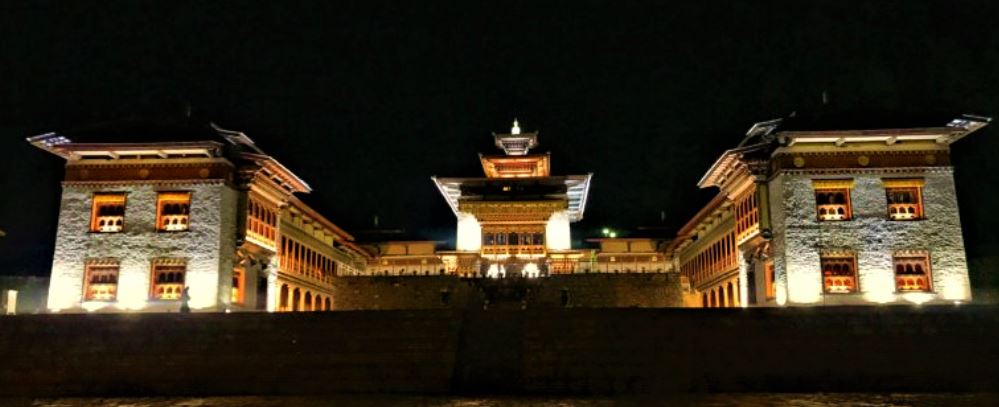 ( Lhakhang Karpo is the most visited sightseeing place in bhutan and mostly tourists must visit here )
( Lhakhang Karpo is the most visited sightseeing place in bhutan and mostly tourists must visit here )
Lhakhang Karpo Sightseeing
Lhakhang Karpo, or the White Temple, is one of the most sacred sites in Haa Valley. The temple is situated on a hilltop and offers panoramic views of the surrounding valley, with its pristine landscapes and rich green fields. According to legend, the temple was built in the 7th century by the Tibetan king Songtsen Gampo, and it is believed to be one of the oldest Buddhist sites in Bhutan.
Lhakhang Karpo is an important religious center for the people of Haa, and its serene setting makes it a popular pilgrimage site.The temple is steeped in both history and religious significance. It was originally constructed to subdue the evil forces in the region, and over the centuries, it has become a place of spiritual importance for the locals.
27. Haa Dzong
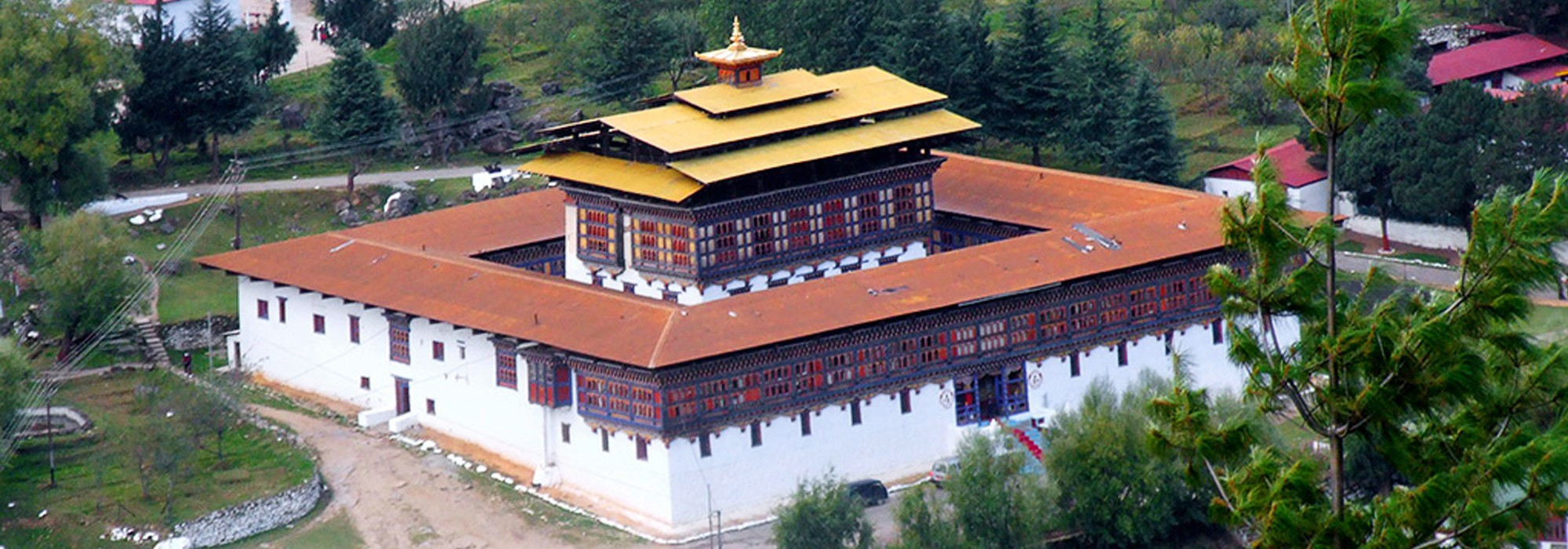 ( Haa Dzong is the most visited sightseeing place in bhutan and mostly tourists must visit here )
( Haa Dzong is the most visited sightseeing place in bhutan and mostly tourists must visit here )
Haa Dzong Sightseeing
Haa Dzong, also known as the Fortress of Haa, is one of the most important historical landmarks in the region. Located on the banks of the Haa River, the dzong was built in the 16th century to protect the valley from external threats and to establish political control over the area. The fortress has served as both a military stronghold and a center for religious activities, making it an integral part of Bhutan's history.
The architecture of Haa Dzong is a stunning example of traditional Bhutanese design, with large stone walls, intricate woodwork, and a large central courtyard. Though the dzong is not as well-preserved as some of Bhutan’s other dzongs, it remains an important symbol of the region’s history and culture. The dzong’s location, overlooking the Haa River and surrounded by lush forested hills, provides visitors with an opportunity to appreciate both its historical significance and its natural beauty.
28. Chele La Pass
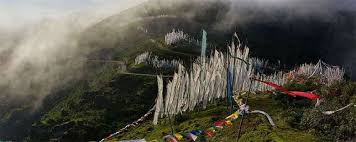 ( Chele La Pass is the most visited sightseeing place in bhutan and mostly tourists must visit here )
( Chele La Pass is the most visited sightseeing place in bhutan and mostly tourists must visit here )
Chele La Pass
Chele La Pass is one of the highest motorable passes in Bhutan, located at an elevation of 3,988 meters above sea level. It serves as the gateway between Haa and Paro valleys and is a must-visit destination for nature enthusiasts, trekkers, and adventure seekers. The pass is famous for its breathtaking panoramic views of the Himalayan mountain range, including views of Jhomolhari and Jichu Drake peaks, which are sacred mountains in Bhutan.
The journey to Chele La Pass is a scenic one, passing through dense forests of oak, pine, and rhododendron trees. The pass is also a haven for birdwatchers, with various species of birds, including the rare Bhutanese red panda and takin, Bhutan’s national animal, occasionally spotted in the area. Visitors can enjoy a leisurely walk along the pass and explore the nearby chelela monasteries. The monasteries are peaceful and provide a great opportunity for reflection and meditation.
29. Bumthang Haa Trek
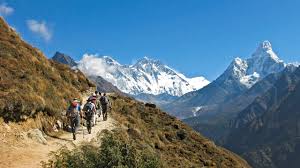 ( Bumthang Haa Trek is the most visited sightseeing place in bhutan and mostly tourists must visit here )
( Bumthang Haa Trek is the most visited sightseeing place in bhutan and mostly tourists must visit here )
Bumthang Haa Trek
The Bumthang Haa Trek is a scenic and challenging trek that connects the Bumthang and Haa valleys. The trek offers an excellent opportunity to explore Bhutan’s rural landscapes, pristine forests, and traditional villages. The trail passes through dense forests of juniper, rhododendron, and blue pine, offering trekkers the chance to experience Bhutan’s rich biodiversity.Along the trek, trekkers pass through remote villages where they can observe Bhutanese rural life and culture.
The trek also takes you through some of Bhutan’s most sacred temples and monasteries, providing a unique spiritual experience.
30. Trongsa Dzong
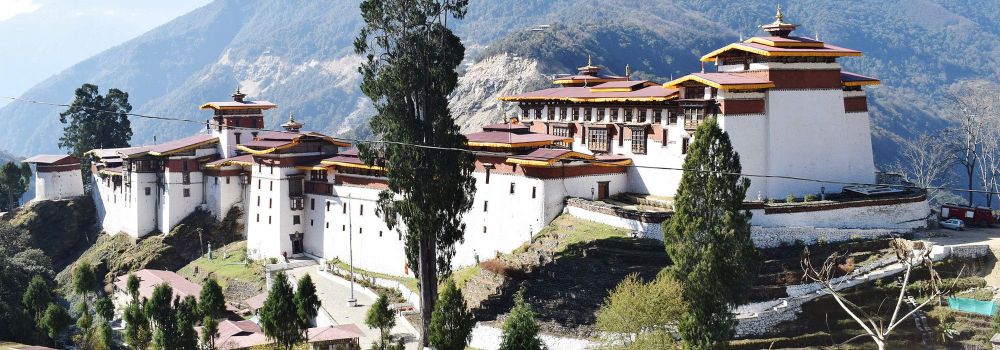 ( Trongsa Dzong is the most visited sightseeing place in bhutan and mostly tourists must visit here )
( Trongsa Dzong is the most visited sightseeing place in bhutan and mostly tourists must visit here )
Trongsa Dzong Sightseeing
Trongsa Dzong, the largest fortress in Bhutan, is a significant historical and architectural landmark that sits majestically on a ridge overlooking the Mangde Chhu River. Built in 1644 by Chogyal Minjur Tenpa, the first governor of Trongsa, under the orders of Zhabdrung Ngawang Namgyal, the dzong played a crucial role in Bhutan's unification.
It served as the ancestral seat of Bhutan’s royal family, and traditionally, before ascending the throne, Bhutan’s kings must first serve as the Trongsa Penlop (governor).The dzong's strategic location in central Bhutan made it an essential administrative and defensive stronghold. Its towering whitewashed walls, intricate woodwork, and golden rooftops stand in stark contrast to the green valleys below, creating a breathtaking view. Inside, visitors can explore numerous courtyards, temples, and passageways that tell stories of Bhutan’s past.
31. Ta Dzong Trongsa Museum
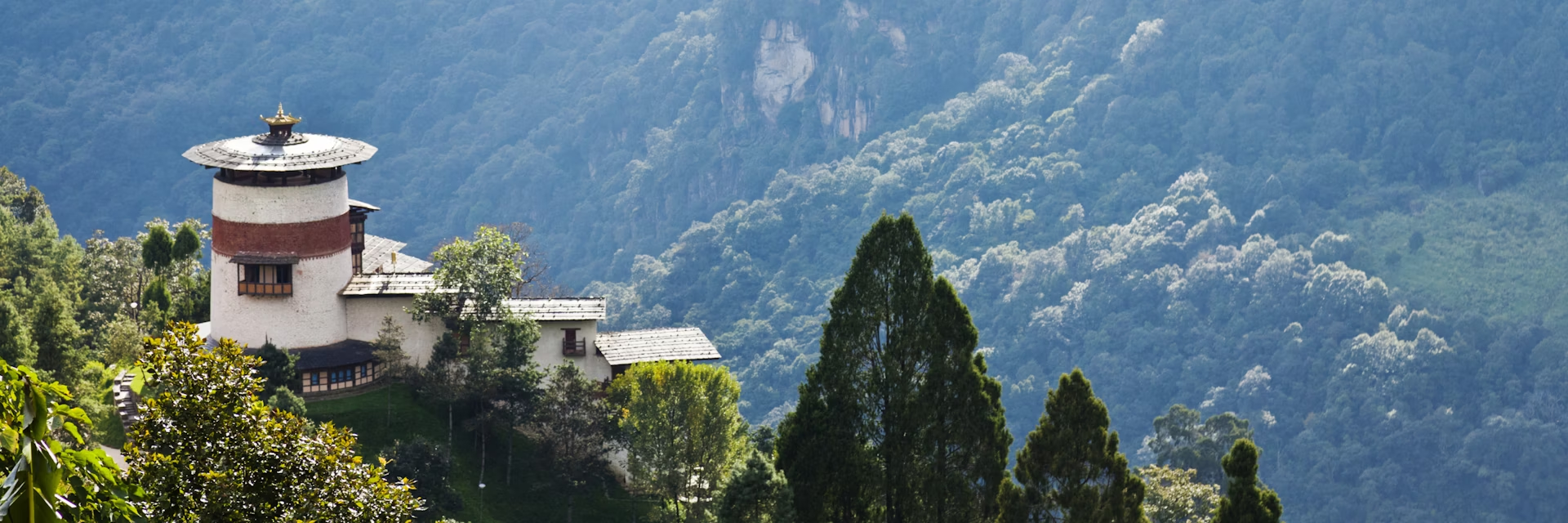 ( Ta Dzong Trongsa Museum is the most visited sightseeing place in bhutan and mostly tourists must visit here )
( Ta Dzong Trongsa Museum is the most visited sightseeing place in bhutan and mostly tourists must visit here )
Ta Dzong (Trongsa Museum) Sightseeing
Perched above Trongsa Dzong, Ta Dzong was originally built as a watchtower to guard against invasions. It has now been converted into the Royal Heritage Museum, offering a deep dive into Bhutanese history, particularly the legacy of the Wangchuck dynasty. The museum showcases an extensive collection of artifacts, including ancient weapons, religious relics, textiles, and royal memorabilia.
One of the most fascinating exhibits in the museum is the Raven Crown, worn by Bhutan’s first king, Ugyen Wangchuck. The crown symbolizes Bhutanese sovereignty and the unity of the nation. The museum also features thangkas (Buddhist paintings), armor, and traditional Bhutanese attire worn by past rulers.
32. Kuenga Rabten Palace
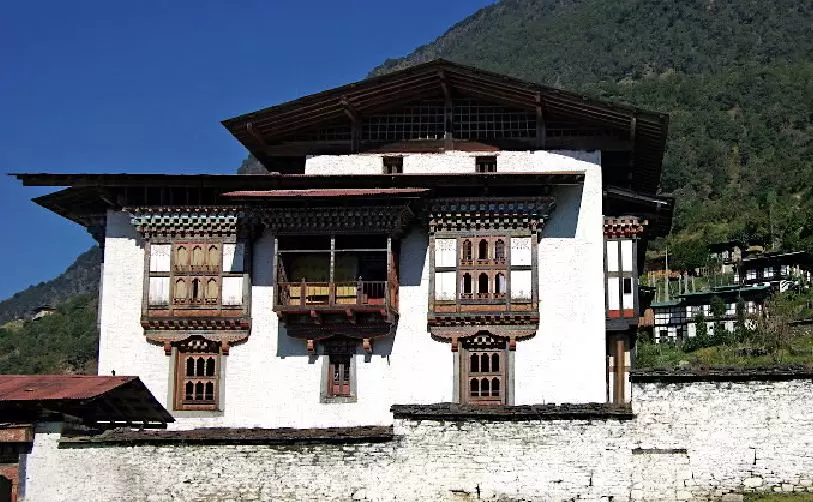 ( Kuenga Rabten Palace is the most visited sightseeing place in bhutan and mostly tourists must visit here )
( Kuenga Rabten Palace is the most visited sightseeing place in bhutan and mostly tourists must visit here )
Kuenga Rabten Palace Sightseeing
Kuenga Rabten Palace, located about 23 kilometers from Trongsa, was once a winter residence for Bhutan’s second king, Jigme Wangchuck. This beautiful palace, set against a backdrop of rolling hills and rice fields, provides insight into Bhutan’s royal history and the lifestyle of its past monarchs.
The palace is a two-story structure featuring intricately painted walls, wooden balconies, and spacious rooms that were once occupied by the royal family. Inside, visitors can explore well-preserved artifacts, including furniture, textiles, and religious relics that reflect Bhutan’s traditional architecture and craftsmanship.
33. Chendebji Chorten
 ( Chendebji Chorten is the most visited sightseeing place in bhutan and mostly tourists must visit here )
( Chendebji Chorten is the most visited sightseeing place in bhutan and mostly tourists must visit here )
Chendebji Chorten Sightseeing
Chendebji Chorten is a sacred Buddhist stupa located along the Trongsa–Punakha highway, about 41 kilometers from Trongsa. Built in the 18th century by Lama Zhida, the chorten closely resembles Nepal’s famous Boudhanath Stupa, featuring a large white dome adorned with all-seeing eyes of the Buddha.
According to legend, the chorten was constructed to subdue a malevolent demon that terrorized the region. Today, it serves as a pilgrimage site for Bhutanese Buddhists and a place of meditation for monks and devotees. The chorten is surrounded by prayer wheels, and the sound of fluttering prayer flags adds to its peaceful atmosphere.
34. Nabji and Korphu Villages
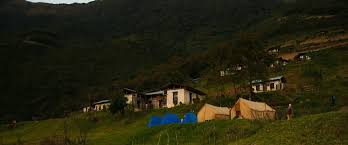 ( Nabji and Korphu Villages is the most visited sightseeing place in bhutan and mostly tourists must visit here )
( Nabji and Korphu Villages is the most visited sightseeing place in bhutan and mostly tourists must visit here )
Nabji and Korphu Villages Sightseeing
For those interested in Bhutan’s rural life and eco-tourism, Nabji and Korphu villages, located in the Jigme Singye Wangchuck National Park, offer a unique cultural experience. These traditional Bhutanese villages provide an opportunity to interact with local communities, learn about their customs, and experience their way of life.
Nabji Village is known for the Nabji Lhakhang, a sacred temple built in the 8th century by Guru Rinpoche to commemorate peace between two warring kings. The temple is surrounded by lush forests and rice fields, offering a perfect blend of spirituality and nature.
35. Mangdue Foot Trail
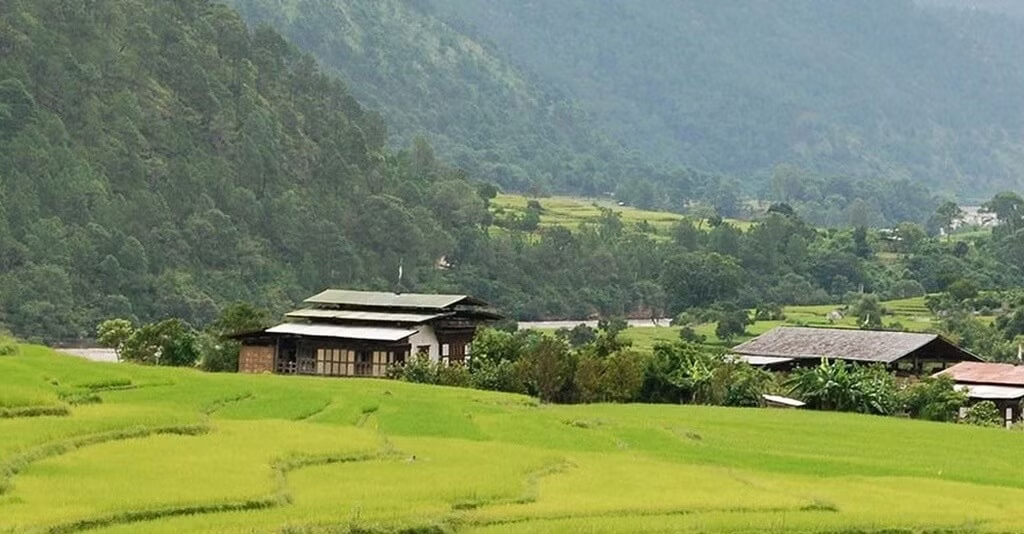 ( Mangdue Foot Trail is the most visited sightseeing place in bhutan and mostly tourists must visit here )
( Mangdue Foot Trail is the most visited sightseeing place in bhutan and mostly tourists must visit here )
Mangdue Foot Trail
The Mangdue Foot Trail is a historic trekking route that once served as the primary path connecting central and eastern Bhutan. Today, it is a scenic hiking trail that offers breathtaking views of Trongsa Dzong, the Mangde Chhu River, and the surrounding valleys.
Hiking along this trail gives visitors a glimpse into Bhutan’s past, when travelers, traders, and monks used this route to journey between different regions of the country. The trail winds through forests of pine and oak, crossing traditional wooden bridges and small villages where locals still follow age-old traditions.
36. Lhuentse Dzong
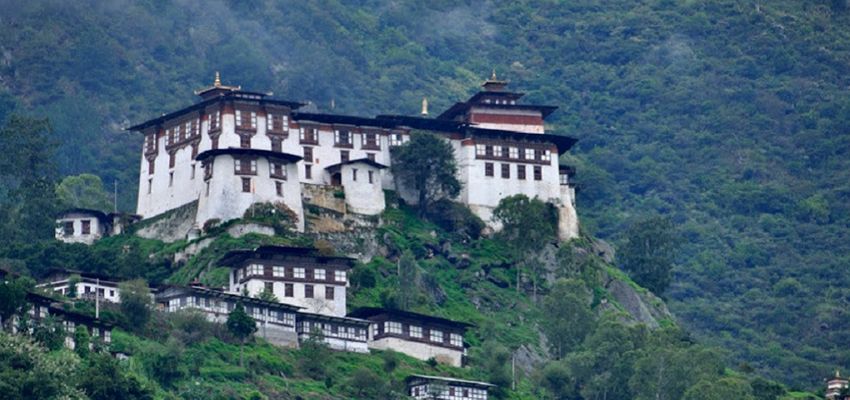 ( Lhuentse Dzong is the most visited sightseeing place in bhutan and mostly tourists must visit here )
( Lhuentse Dzong is the most visited sightseeing place in bhutan and mostly tourists must visit here )
Lhuentse Dzong Sightseeing
Lhuentse Dzong, perched on a rocky ridge overlooking the Kurichu River, is one of the most spectacular and historically significant fortresses in eastern Bhutan. Originally built in the 17th century by Mingyur Tenpa, the dzong serves as the administrative and religious center of the Lhuentse district. The fortress has deep ties to Bhutan’s royal family, as the ancestors of the Wangchuck dynasty originated from this region.
The dzong’s striking architecture, with its towering whitewashed walls, intricate woodwork, and golden rooftops, makes it a mesmerizing sight. Within its courtyards, visitors will find several temples, including the Goenkhang, dedicated to protective deities, and the main prayer hall adorned with exquisite murals and Buddhist relics. The dzong also serves as a monastic school, where monks engage in meditation and religious studies.
37. Khoma Village
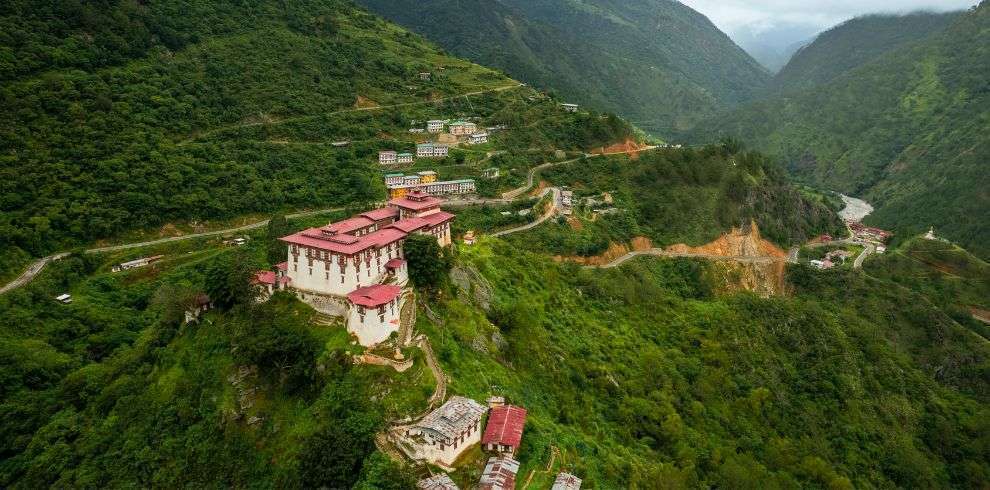 ( Khoma Village is the most visited sightseeing place in bhutan and mostly tourists must visit here )
( Khoma Village is the most visited sightseeing place in bhutan and mostly tourists must visit here )
Khoma Village Sightseeing
Khoma Village, located a short drive from Lhuentse Dzong, is renowned for its exquisite Kishuthara textiles, some of the most elaborate and intricate woven fabrics in Bhutan. The village is home to skilled weavers, predominantly women, who have mastered the art of traditional handloom weaving, passing down their expertise through generations.
Walking through Khoma, visitors can witness the painstaking process of weaving, where artisans use backstrap looms to create intricate patterns and vibrant designs. The textiles produced here are highly prized, often worn by Bhutanese royalty and used for ceremonial occasions. Some pieces take months to complete, showcasing the dedication and skill of the weavers.
38. Takila Guru Rinpoche Statue
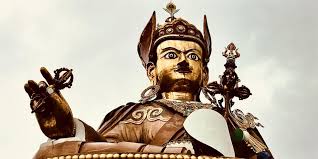 ( Takila Guru Rinpoche Statue is the most visited sightseeing place in bhutan and mostly tourists must visit here )
( Takila Guru Rinpoche Statue is the most visited sightseeing place in bhutan and mostly tourists must visit here )
Takila Guru Rinpoche Statue Sightseeing
One of the most awe-inspiring landmarks in Lhuentse is the Takila Guru Rinpoche Statue, a towering 173-foot bronze statue of Guru Padmasambhava, making it one of the largest statues of the revered Buddhist master in the world. Situated in Takila, a sacred site with strong spiritual significance, the statue was built to bring peace, prosperity, and harmony to Bhutan and the world.
Surrounded by pristine forests and rolling hills, the statue’s location provides a tranquil setting for meditation and prayer. The complex features a temple at the base of the statue, housing Buddhist relics, murals, and statues of deities associated with Guru Rinpoche. Devotees and monks frequently visit to offer prayers, light butter lamps, and seek blessings.
39. Dungkar Nagtshang
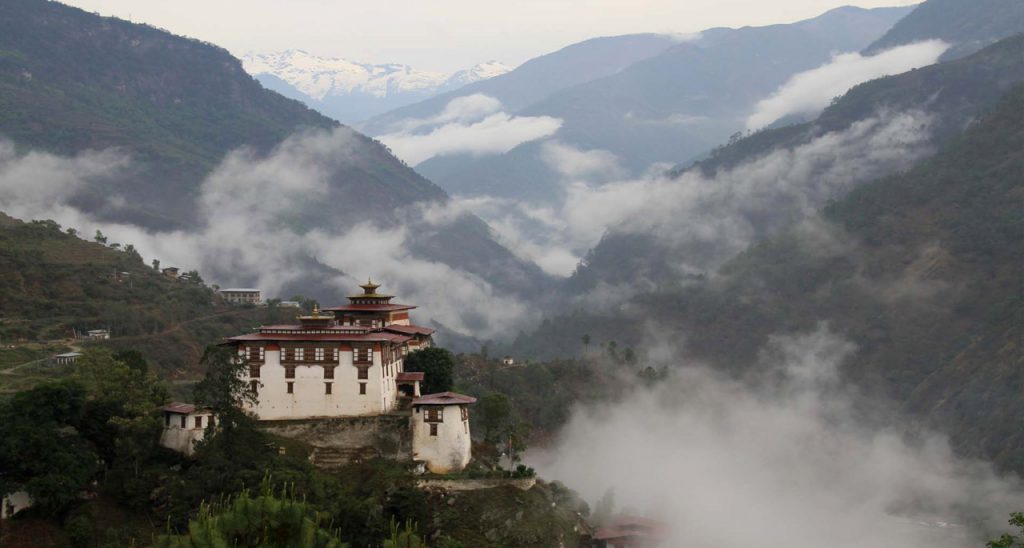 ( Dungkar Nagtshang is the most visited sightseeing place in bhutan and mostly tourists must visit here )
( Dungkar Nagtshang is the most visited sightseeing place in bhutan and mostly tourists must visit here )
Dungkar Nagtshang Sightseeing
Dungkar Nagtshang is a significant ancestral home of the Wangchuck dynasty, Bhutan’s royal family. Located in the remote Dungkar village, this traditional Bhutanese manor stands as a symbol of the deep-rooted history and heritage of the country’s monarchy. It is believed that the ancestors of the first king of Bhutan, Ugyen Wangchuck, once resided here, making it an important historical site.
The manor’s architecture is a fine example of traditional Bhutanese construction, featuring intricately carved wooden windows, stone walls, and a grand central courtyard. Inside, visitors can find religious relics, ancient manuscripts, and murals depicting the spiritual and historical significance of the Wangchuck lineage.
40. Menji Village and Lhuentse Trekking Trails
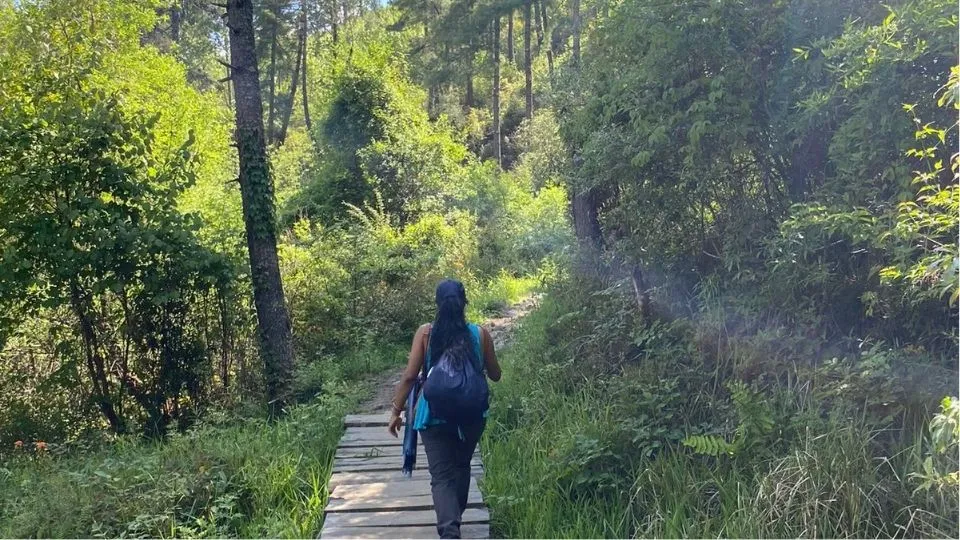 ( Menji Village and Lhuentse Trekking Trails is the most visited sightseeing place in bhutan and mostly tourists must visit here )
( Menji Village and Lhuentse Trekking Trails is the most visited sightseeing place in bhutan and mostly tourists must visit here )
Menji Village and Lhuentse Trekking Trails
For nature lovers and adventure seekers, Lhuentse offers some of Bhutan’s most pristine and untouched trekking routes. One of the most scenic trails leads to Menji Village, a remote settlement surrounded by dense forests and dramatic mountain landscapes. The trek to Menji takes visitors through diverse terrain, including lush meadows, rhododendron forests, and high-altitude pastures where yaks graze.
Menji Village provides a glimpse into traditional Bhutanese rural life, with simple stone houses, terraced fields, and friendly locals who warmly welcome visitors. Travelers can experience authentic Bhutanese hospitality, enjoy home-cooked meals, and learn about the daily life of the villagers.
41. Jangchubling Monastery
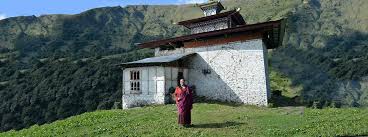 ( Jangchubling Monastery is the most visited sightseeing place in bhutan and mostly tourists must visit here )
( Jangchubling Monastery is the most visited sightseeing place in bhutan and mostly tourists must visit here )
Jangchubling Monastery Sightseeing
Jangchubling Monastery, a serene and secluded Buddhist monastery, is one of Lhuentse’s hidden spiritual gems. Situated on a hilltop, the monastery offers a peaceful retreat for monks and visitors seeking solace and meditation. The monastery follows the Nyingma tradition of Tibetan Buddhism and serves as a center for Buddhist teachings and practices.
The architecture of Jangchubling reflects Bhutan’s traditional monastic design, with intricate paintings, prayer wheels, and meditation halls. Inside, visitors can see ancient Buddhist scriptures, thangkas, and statues of deities associated with the monastery’s lineage. The monks residing here follow a disciplined lifestyle, dedicating their time to prayers, rituals, and meditation.
Categories

Request a call back
Our experts would love to create a package just for you!







